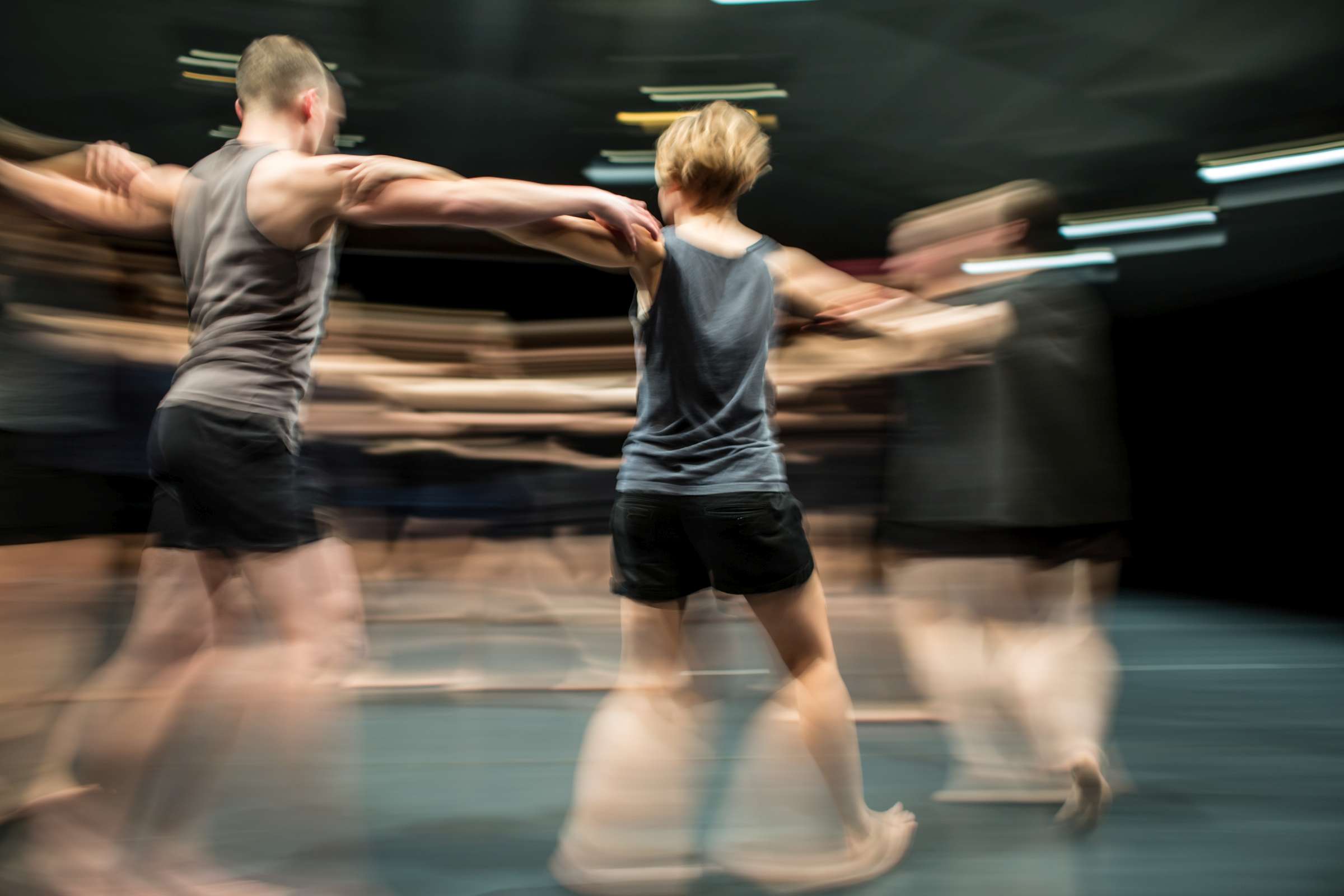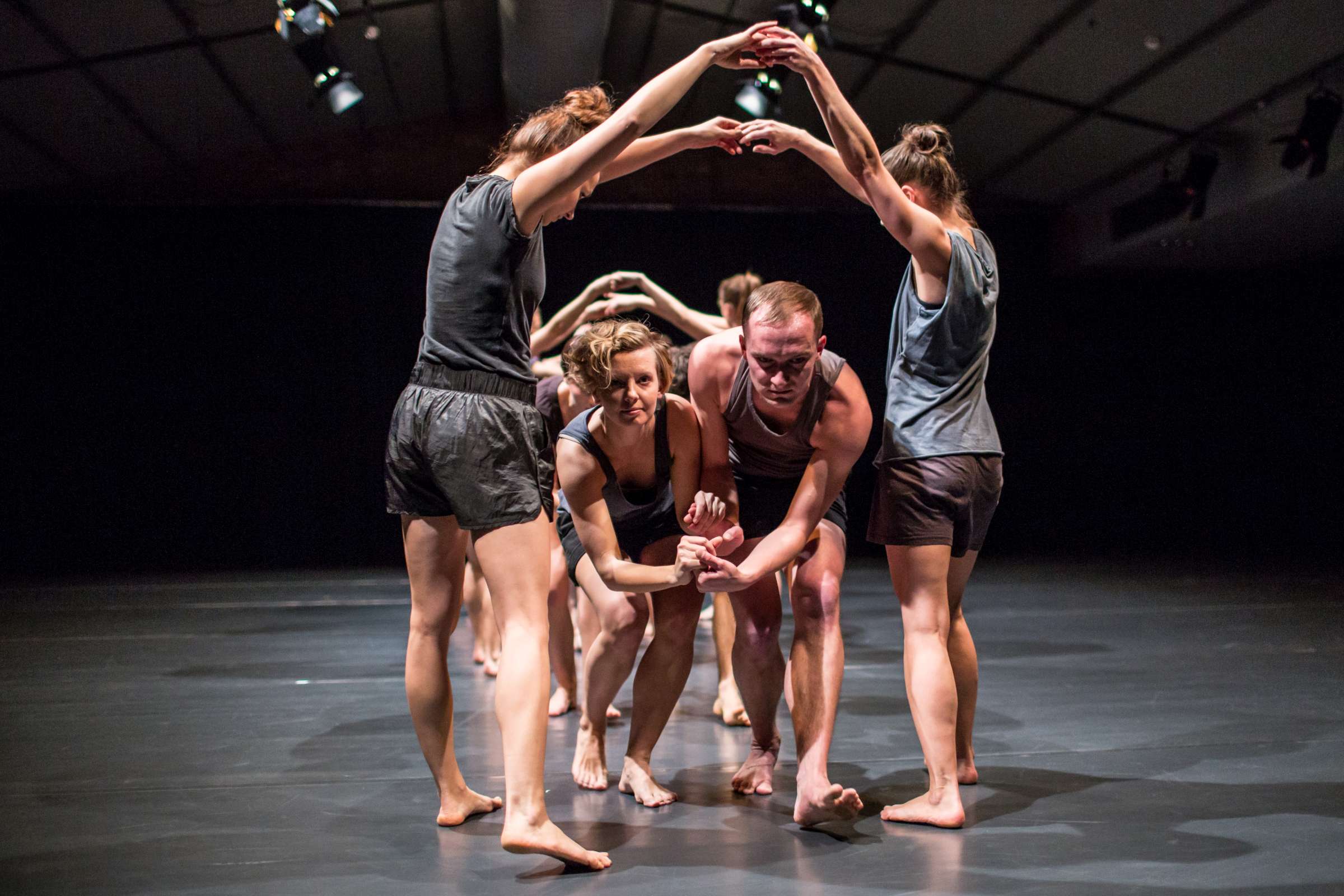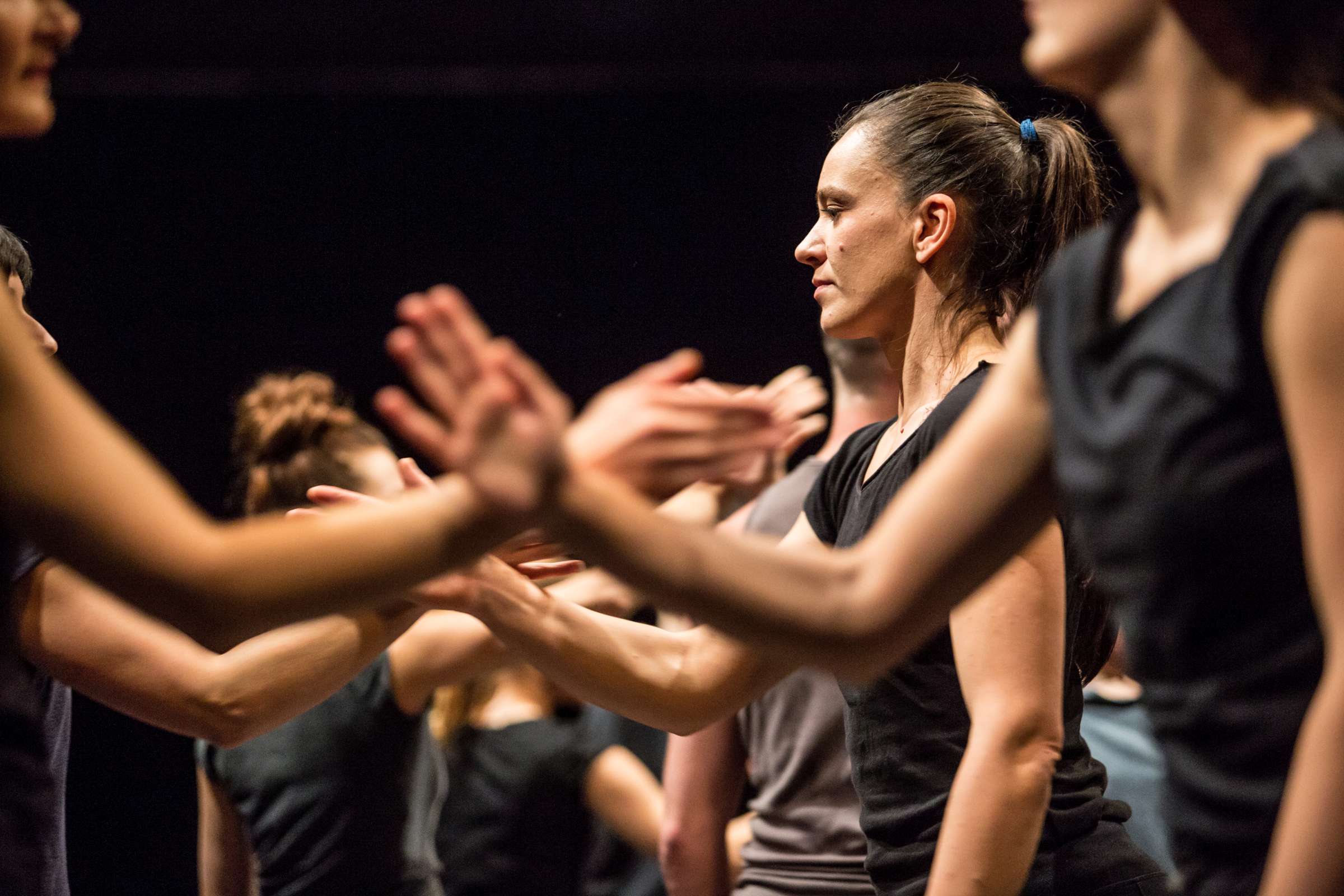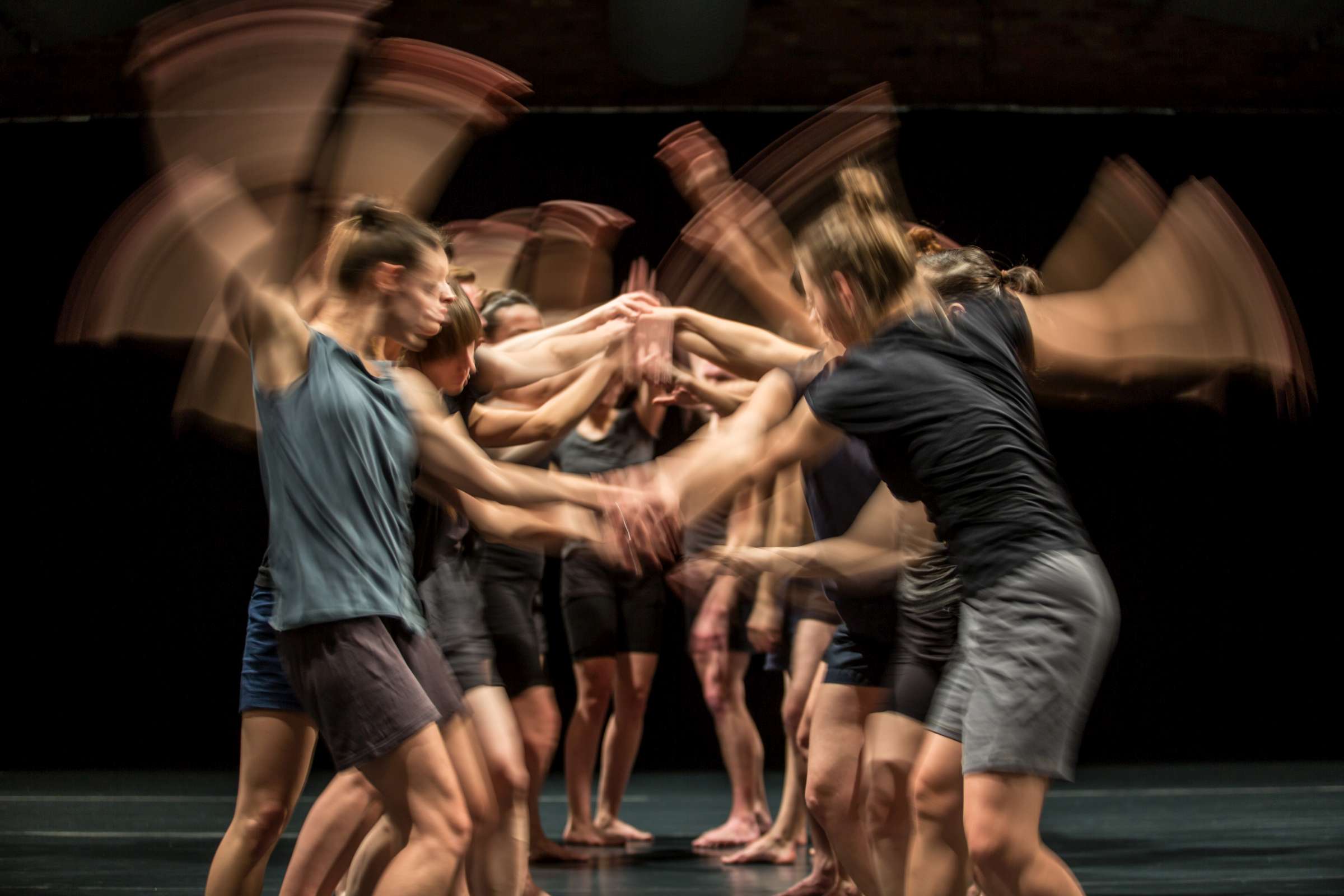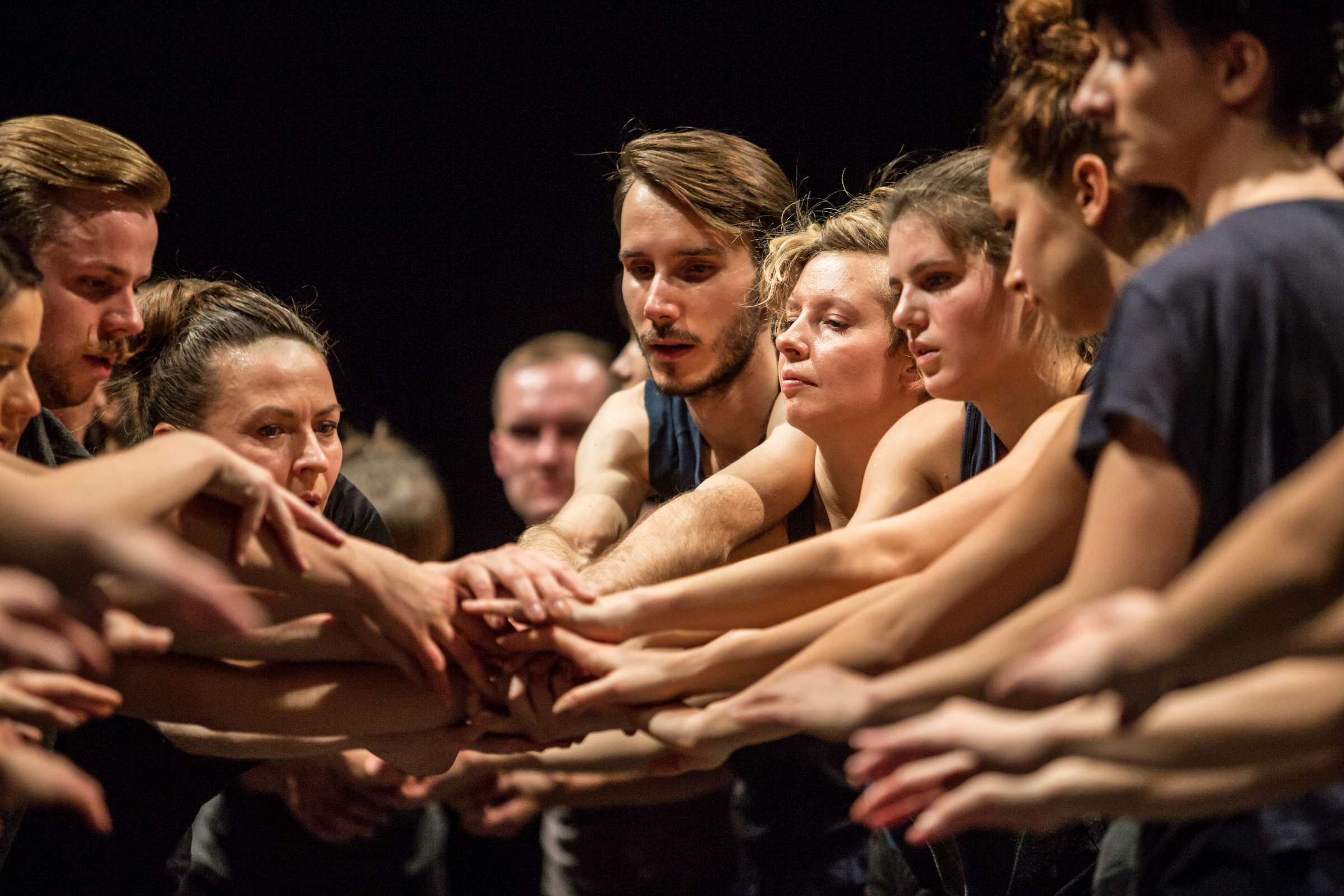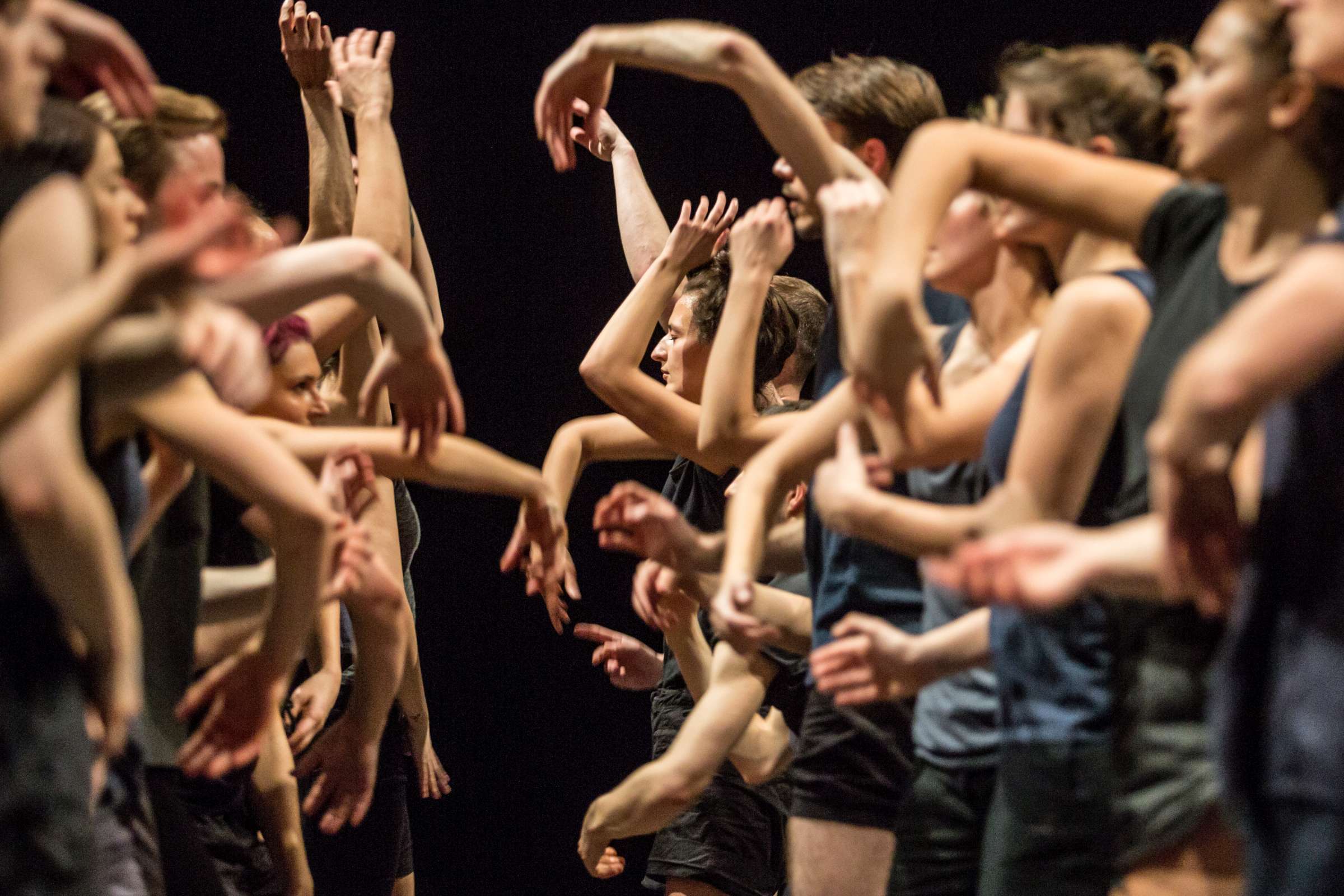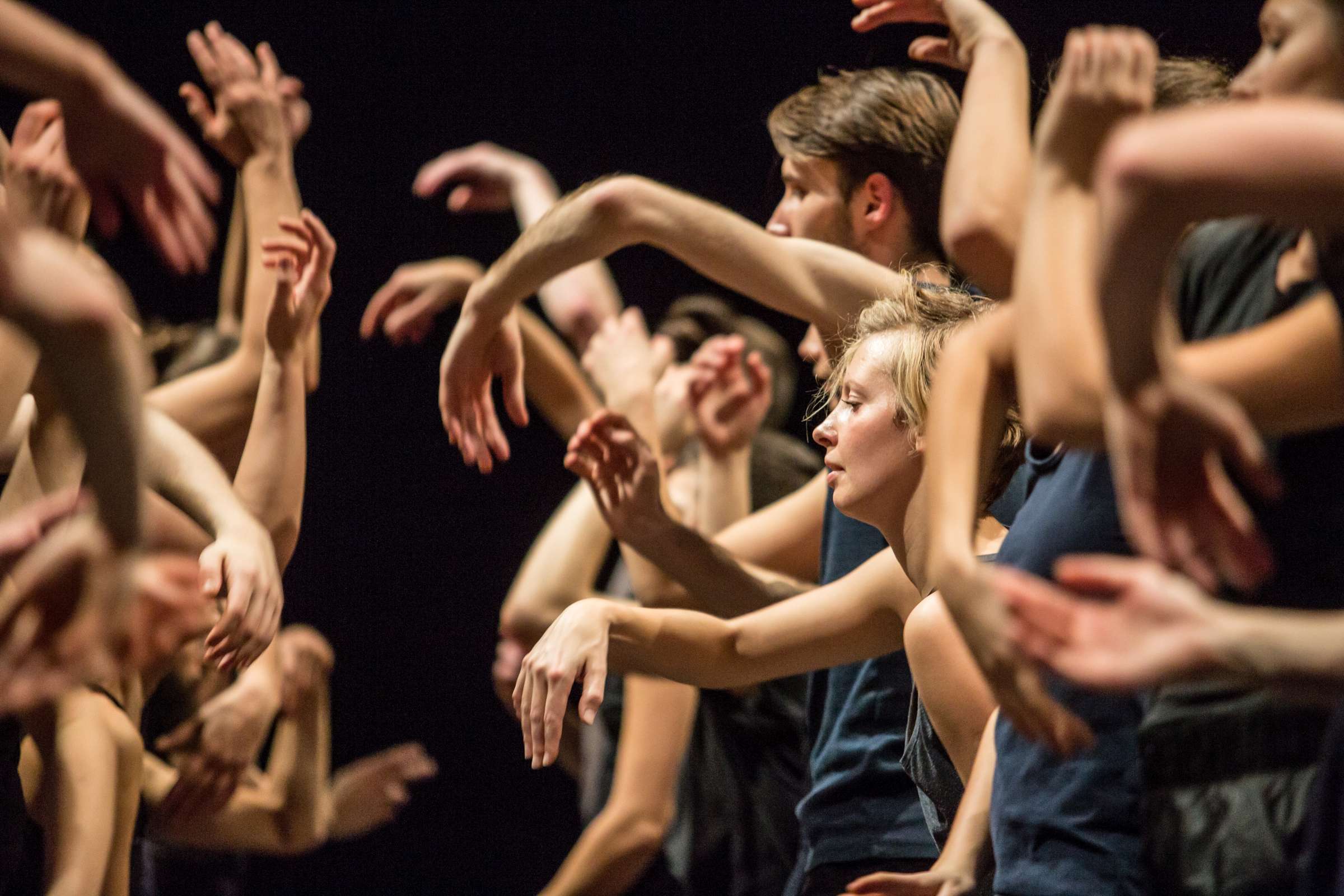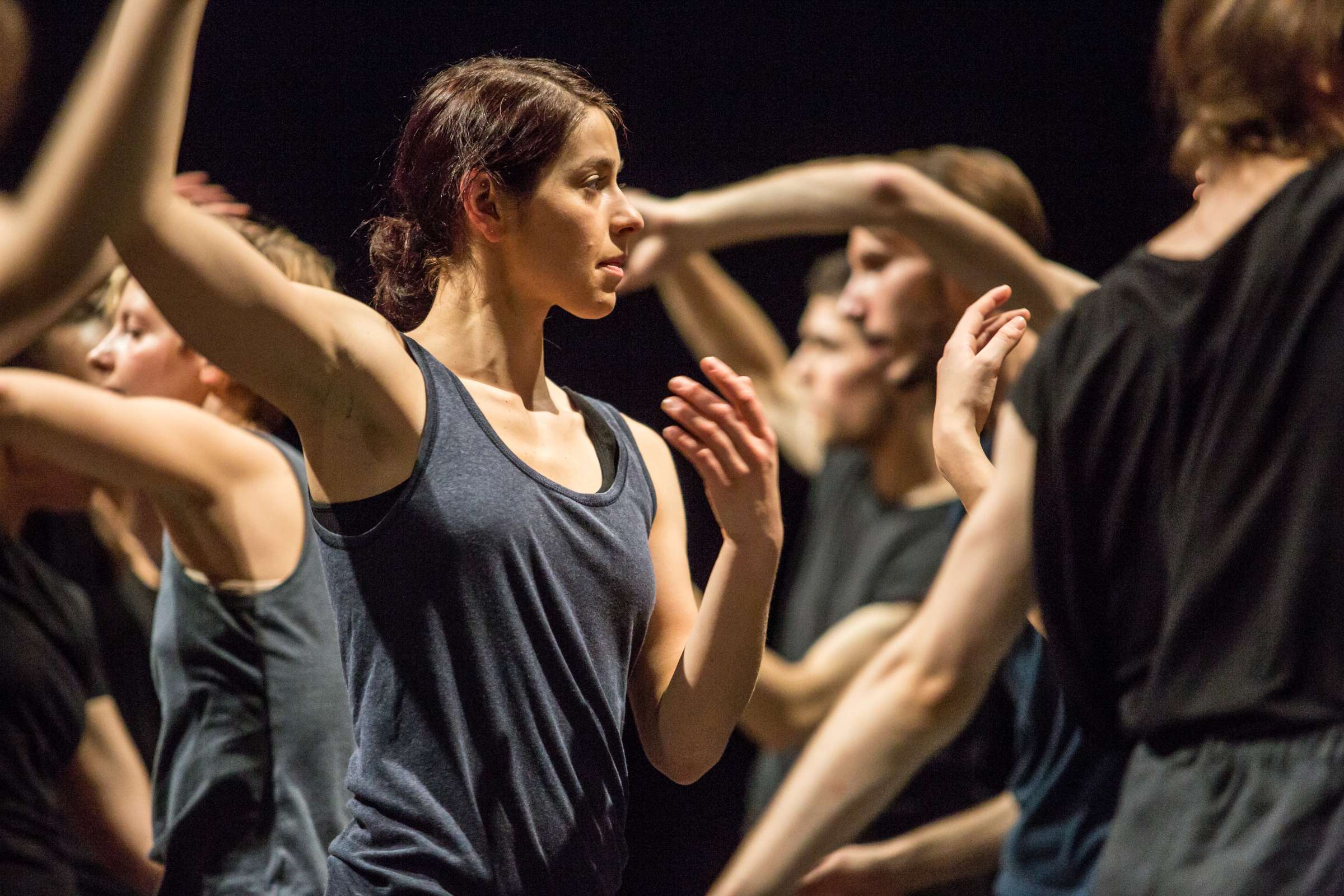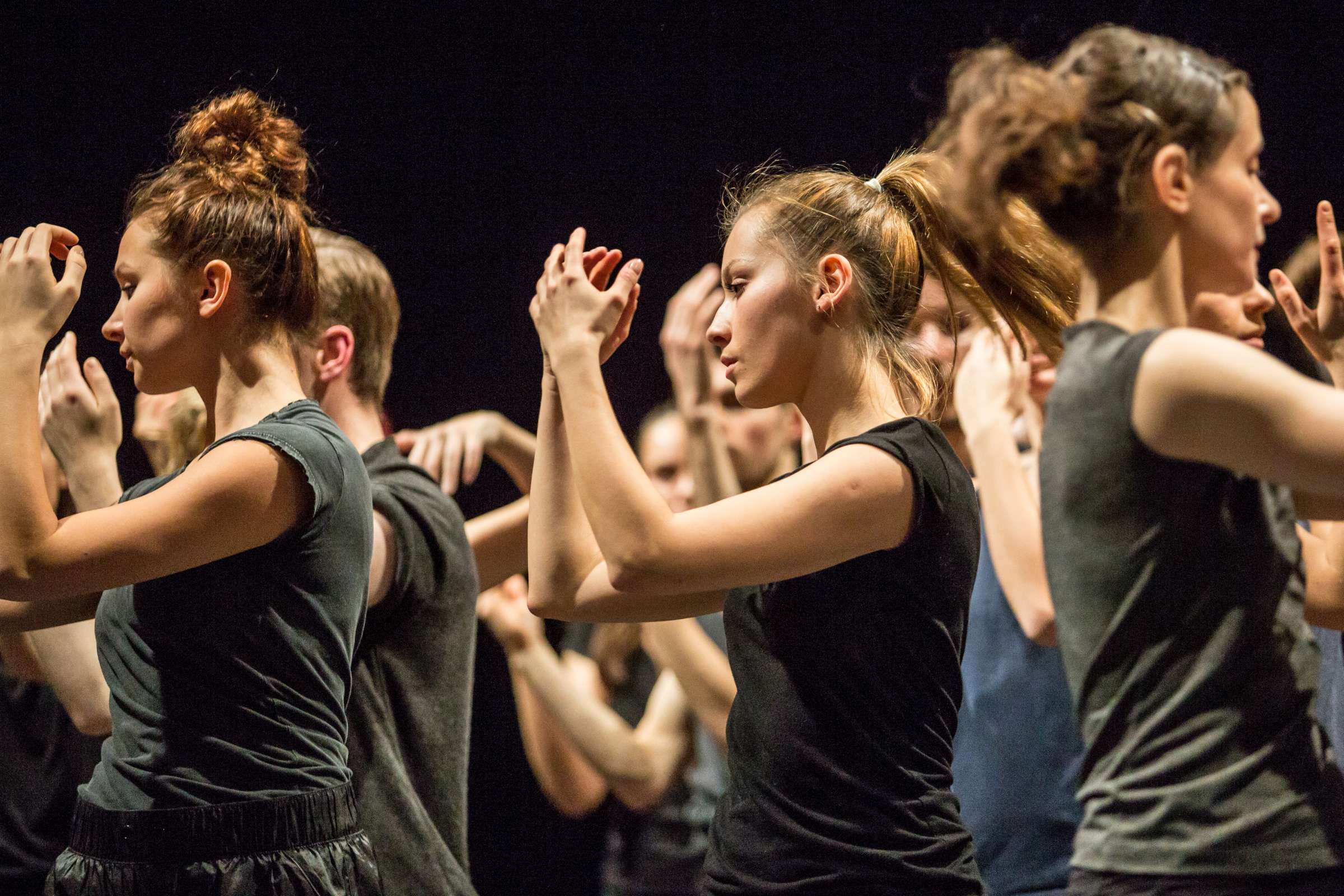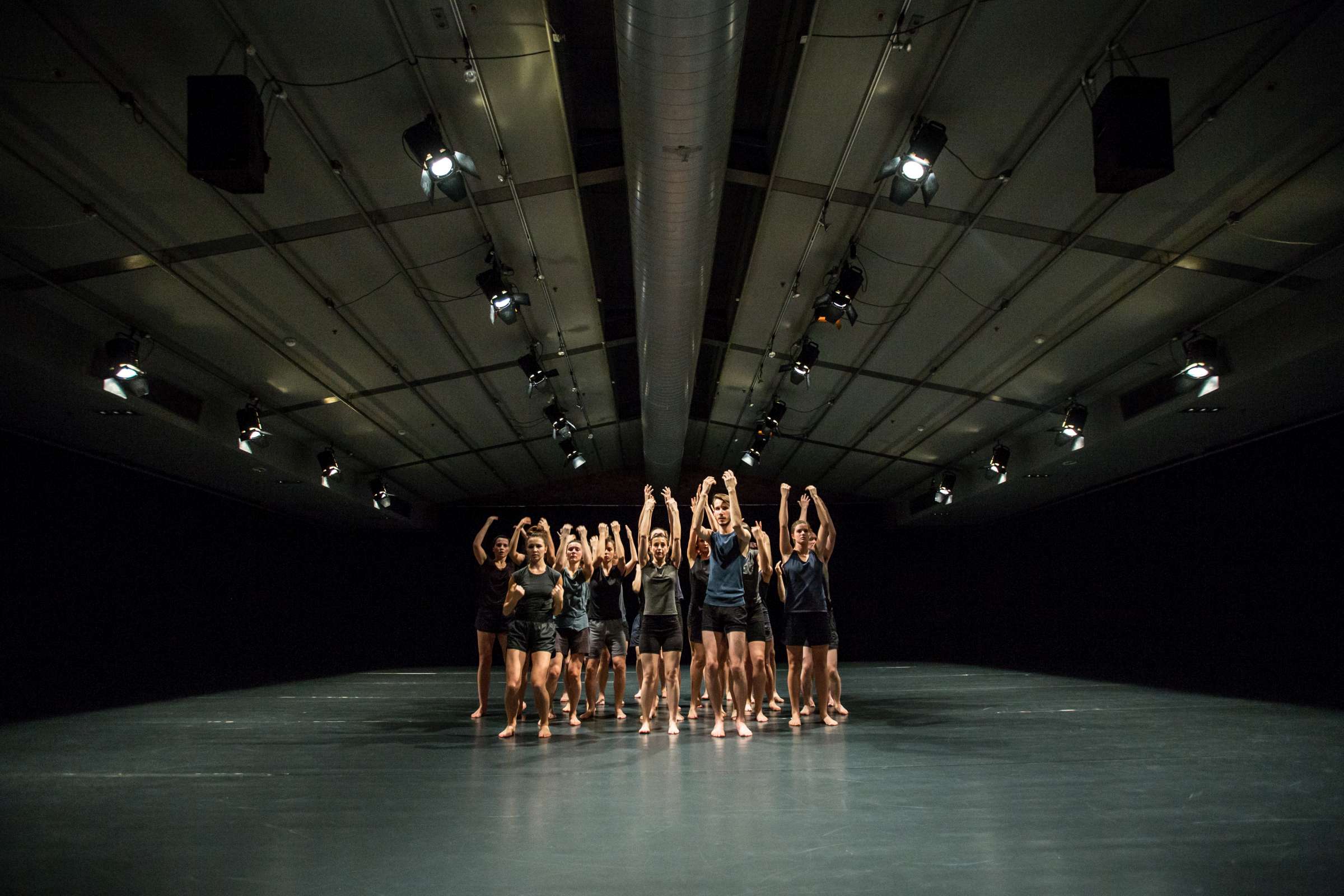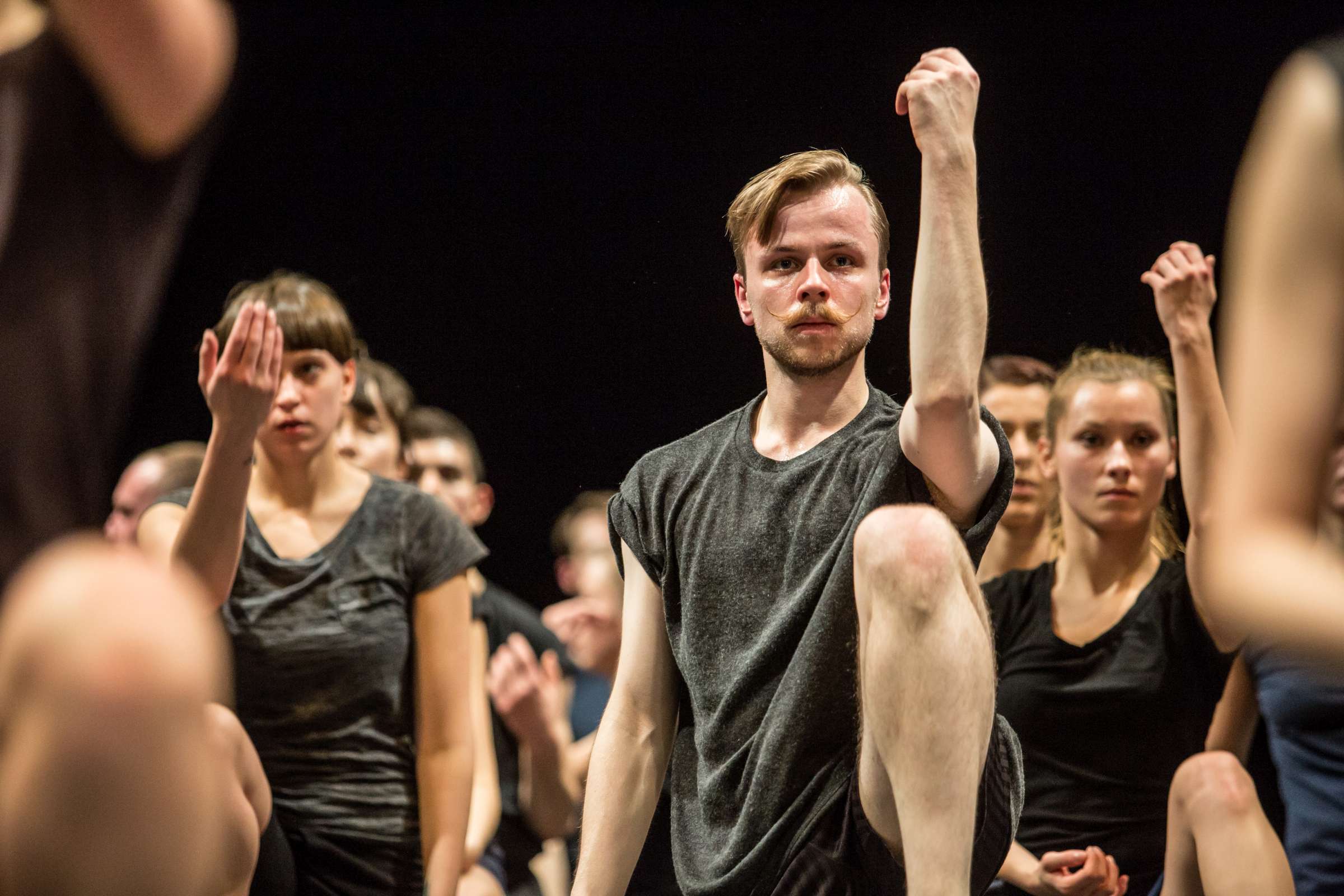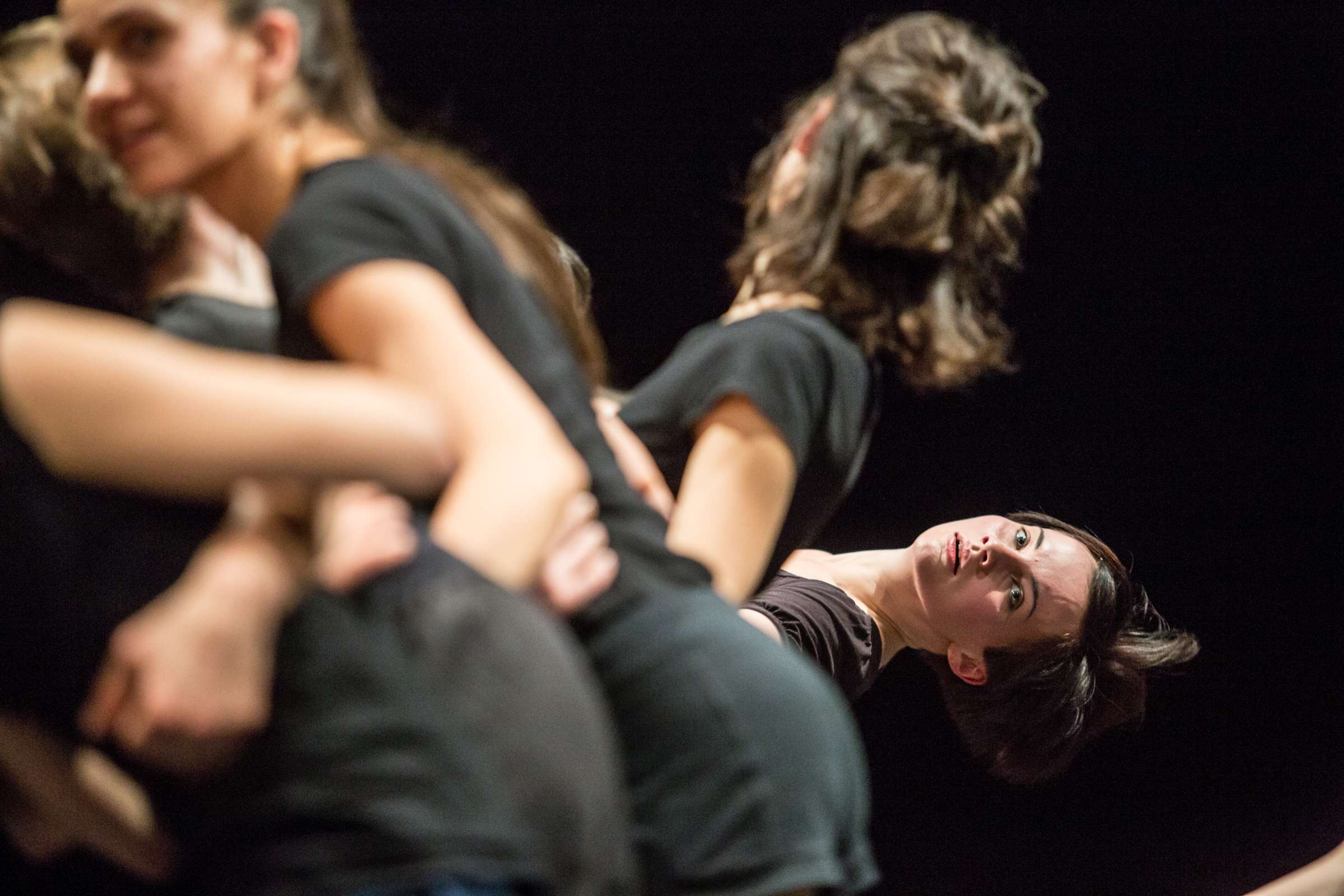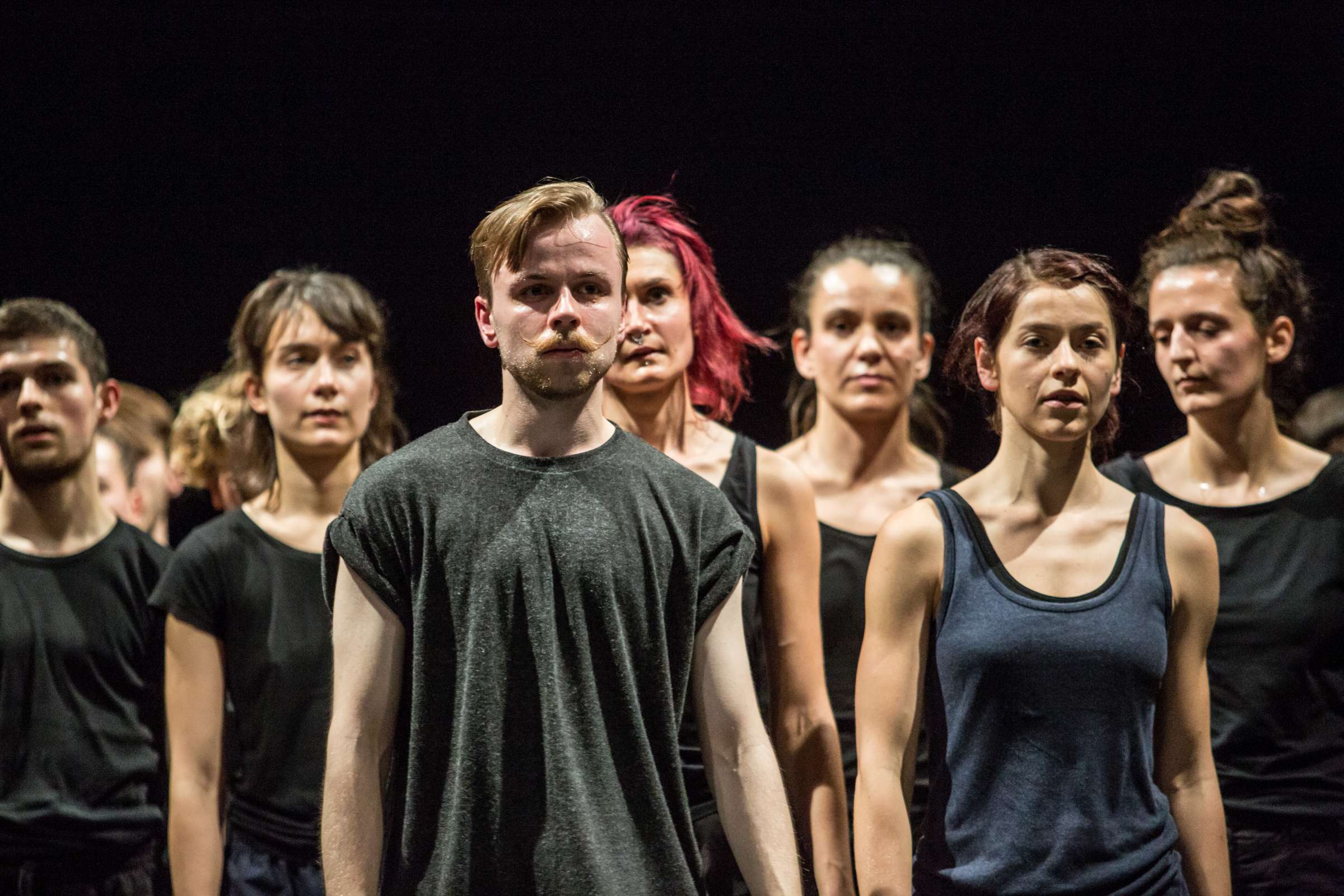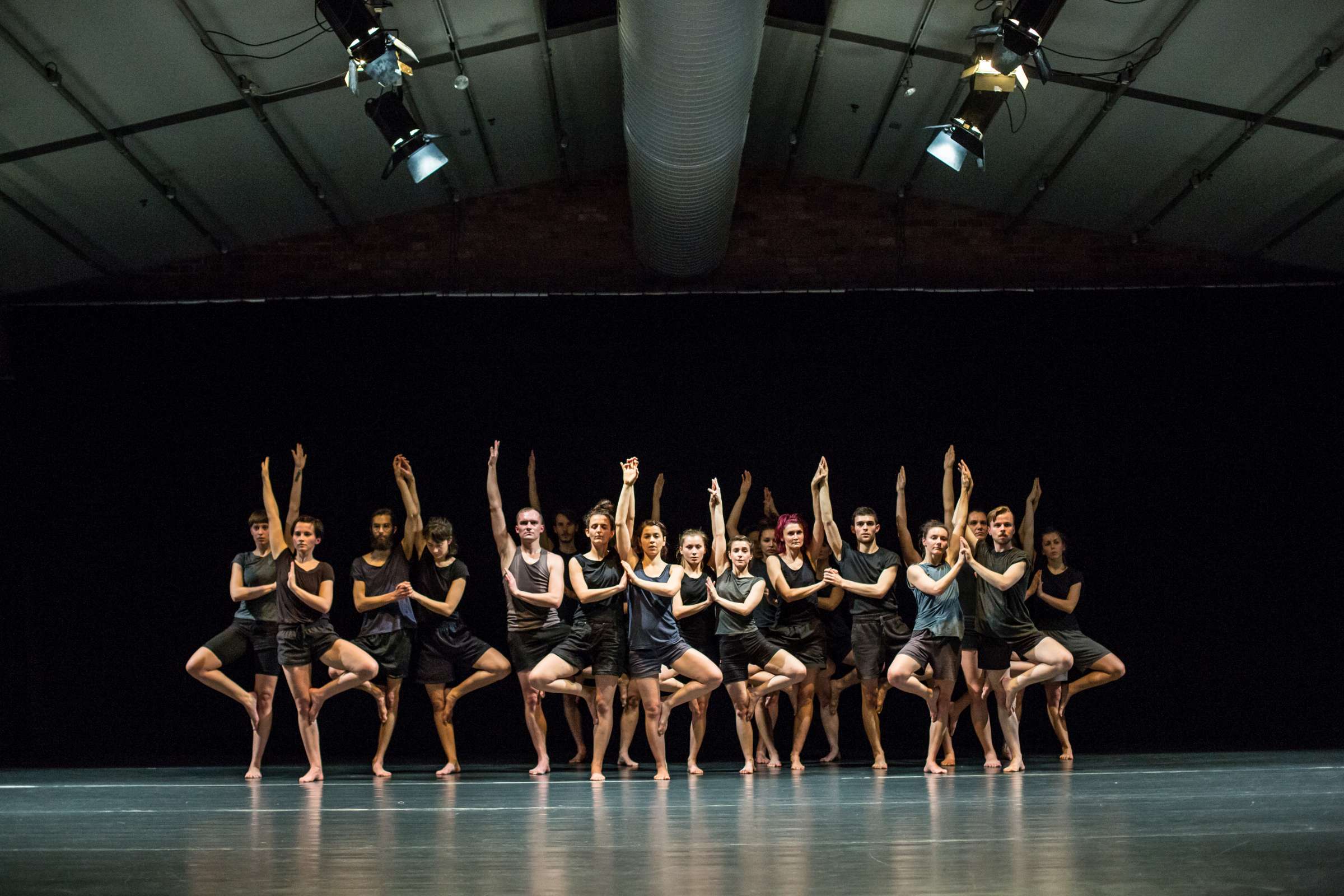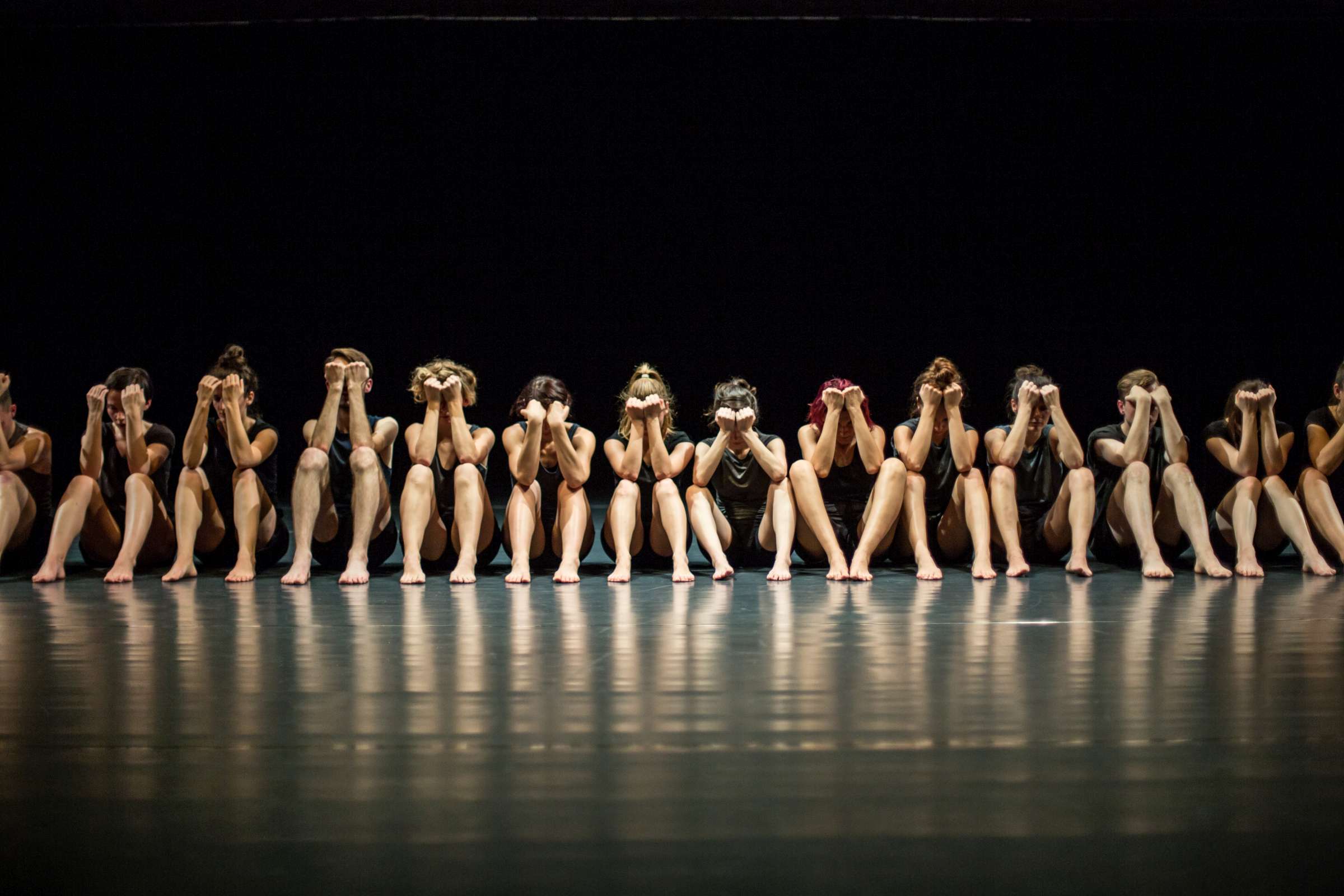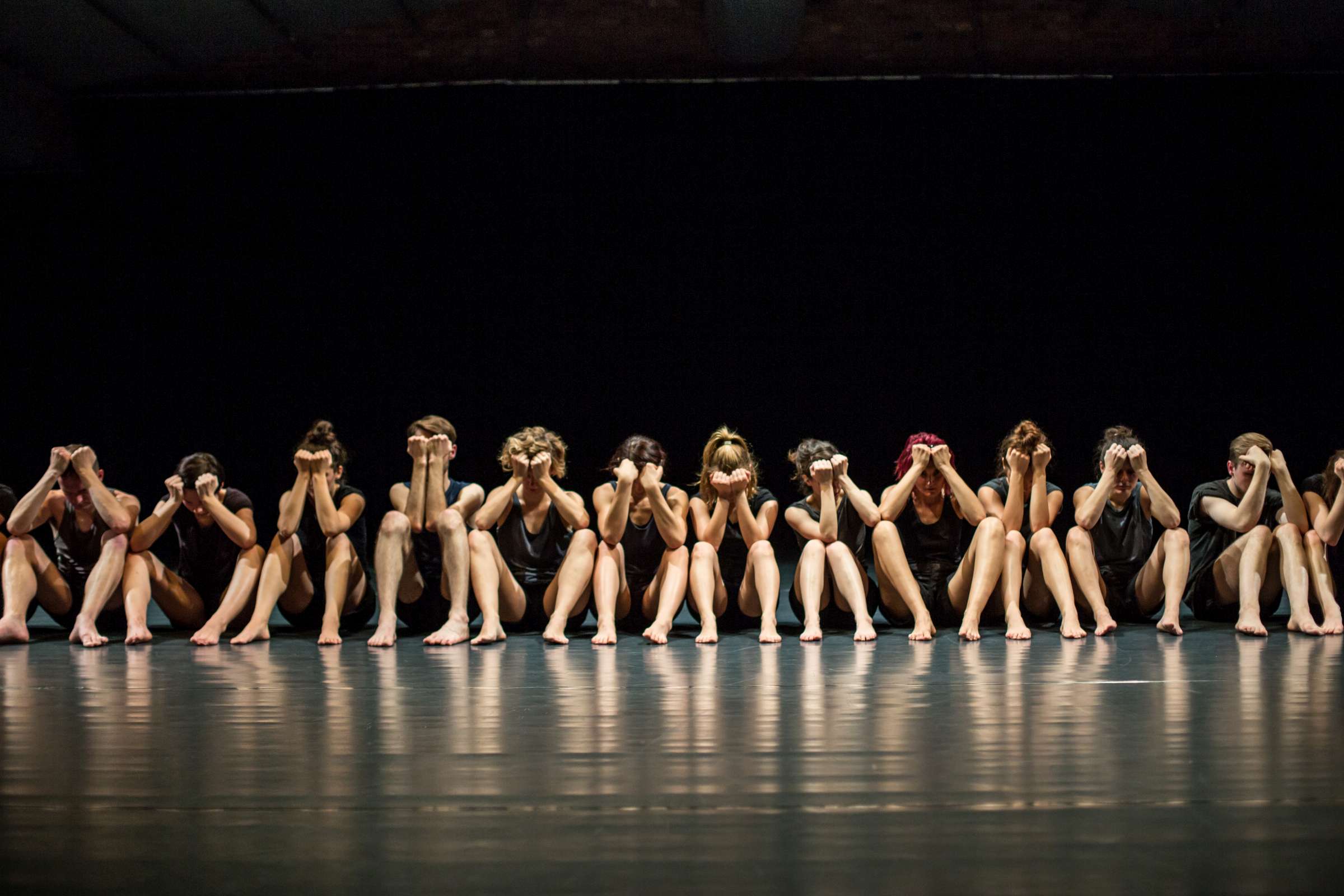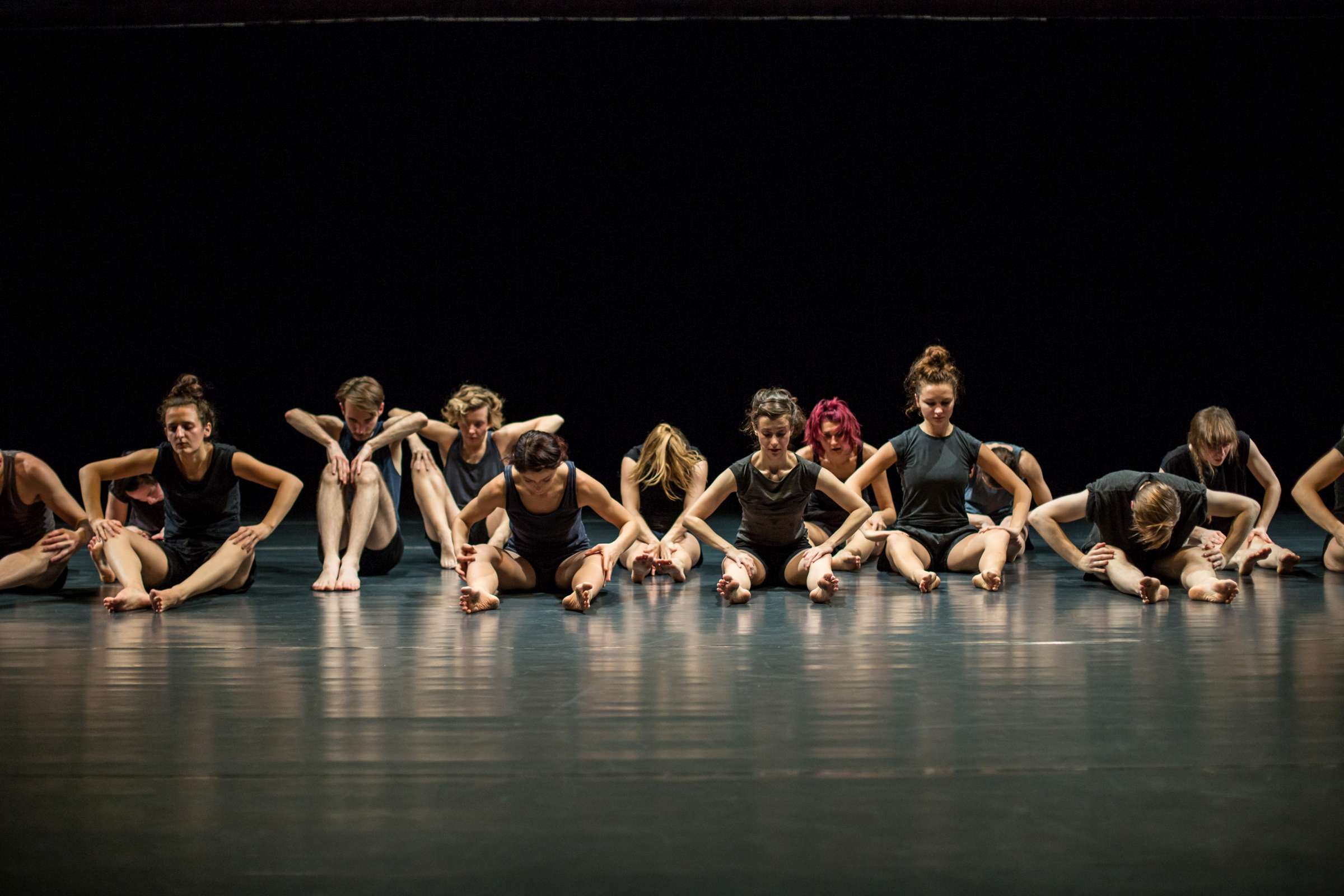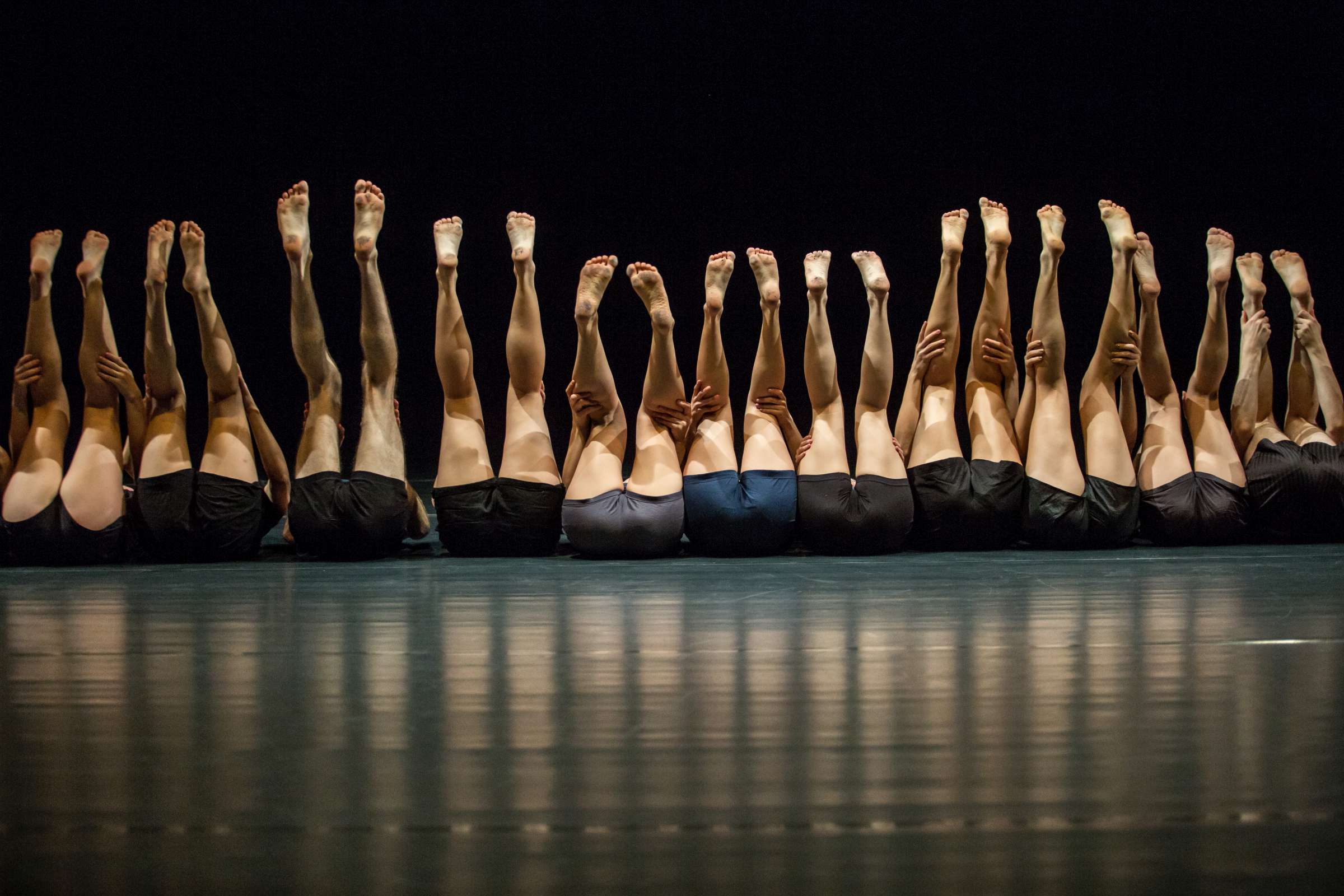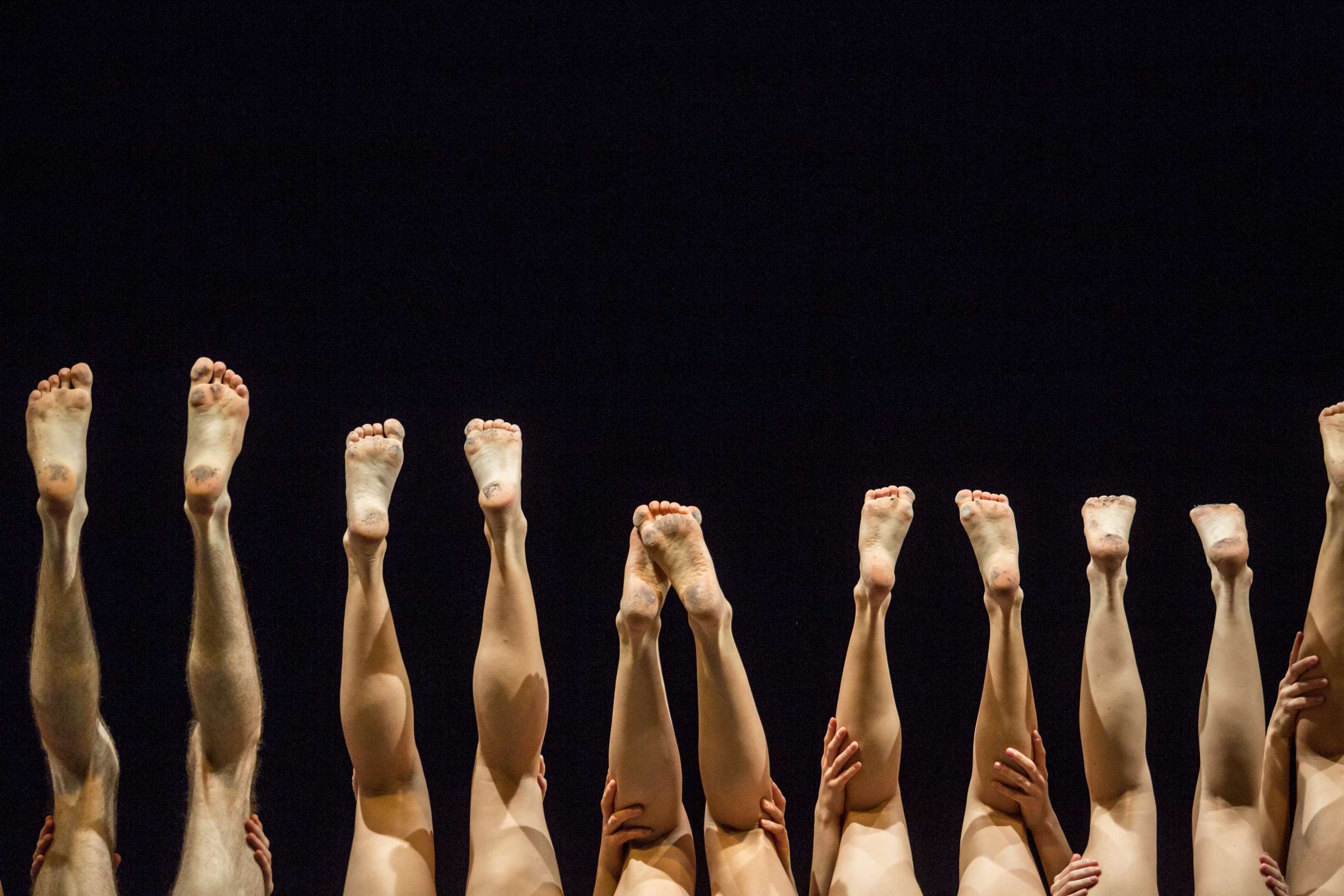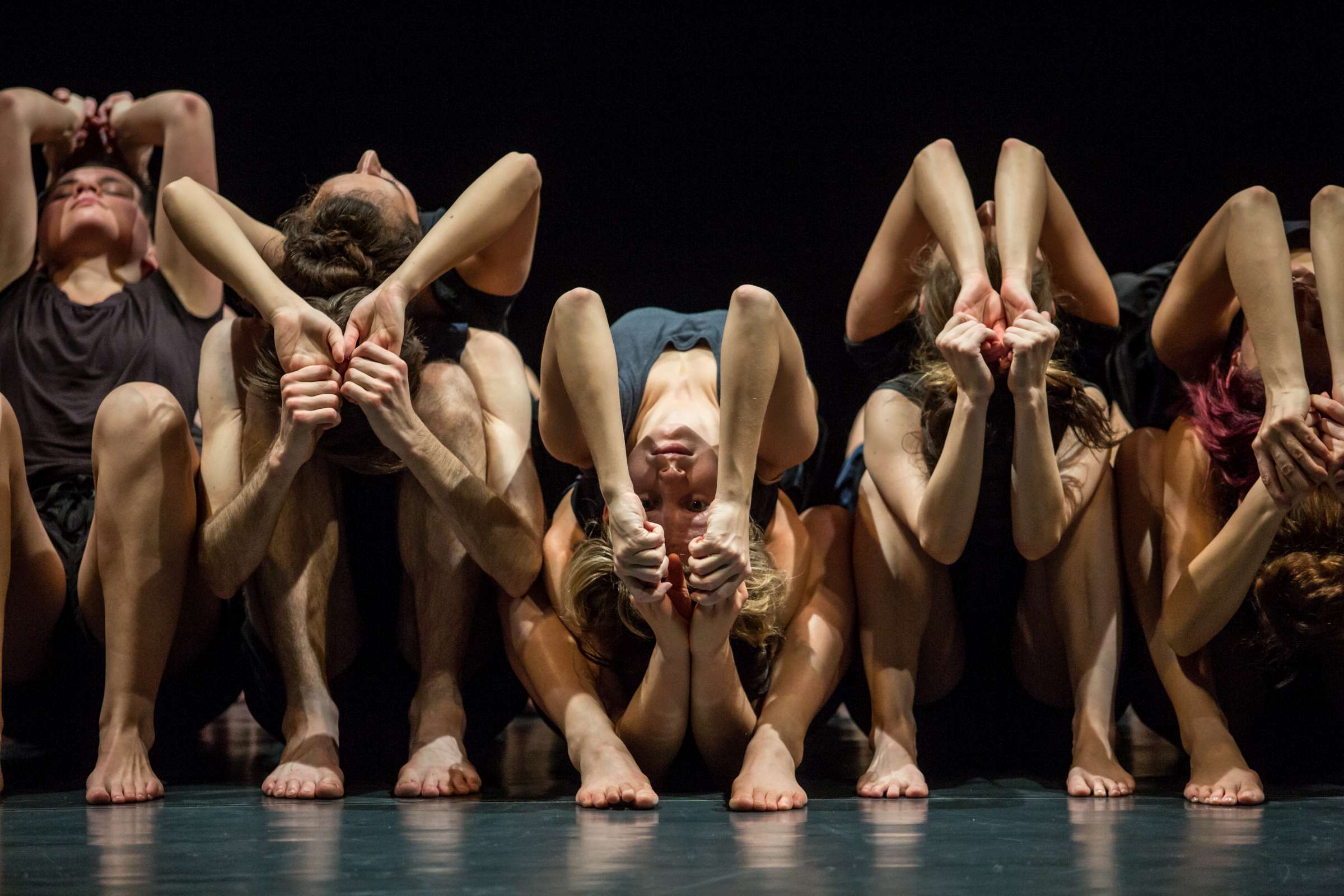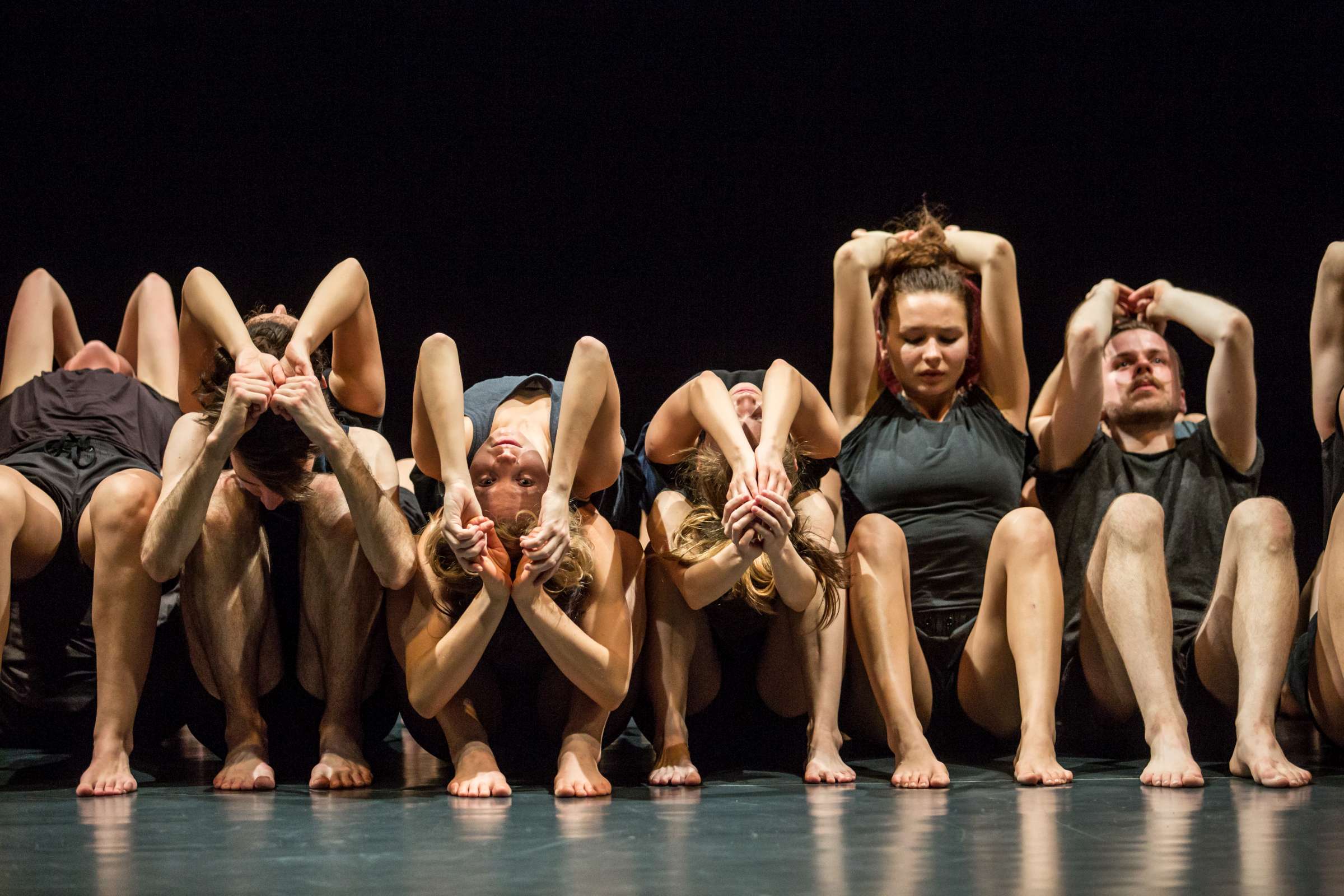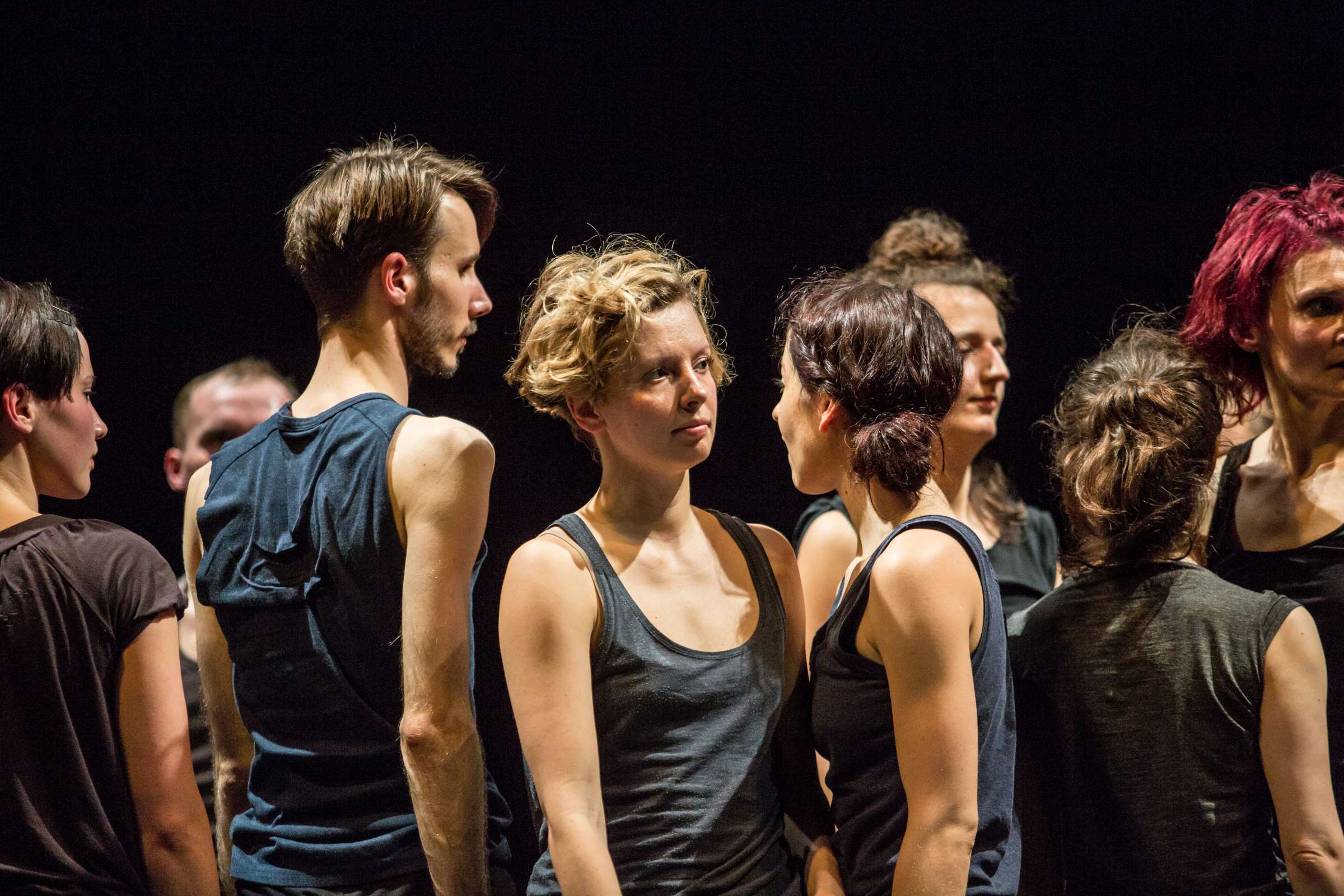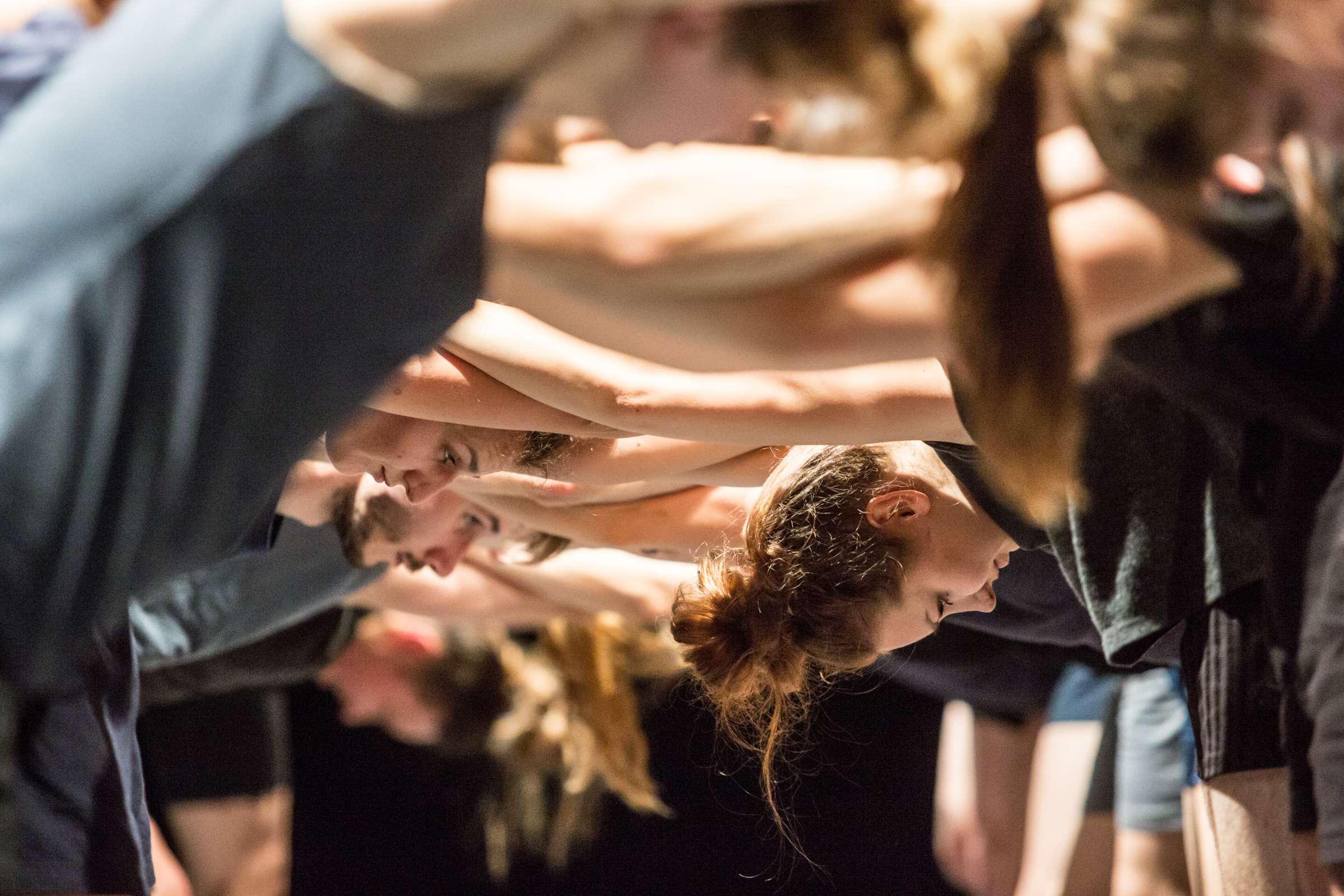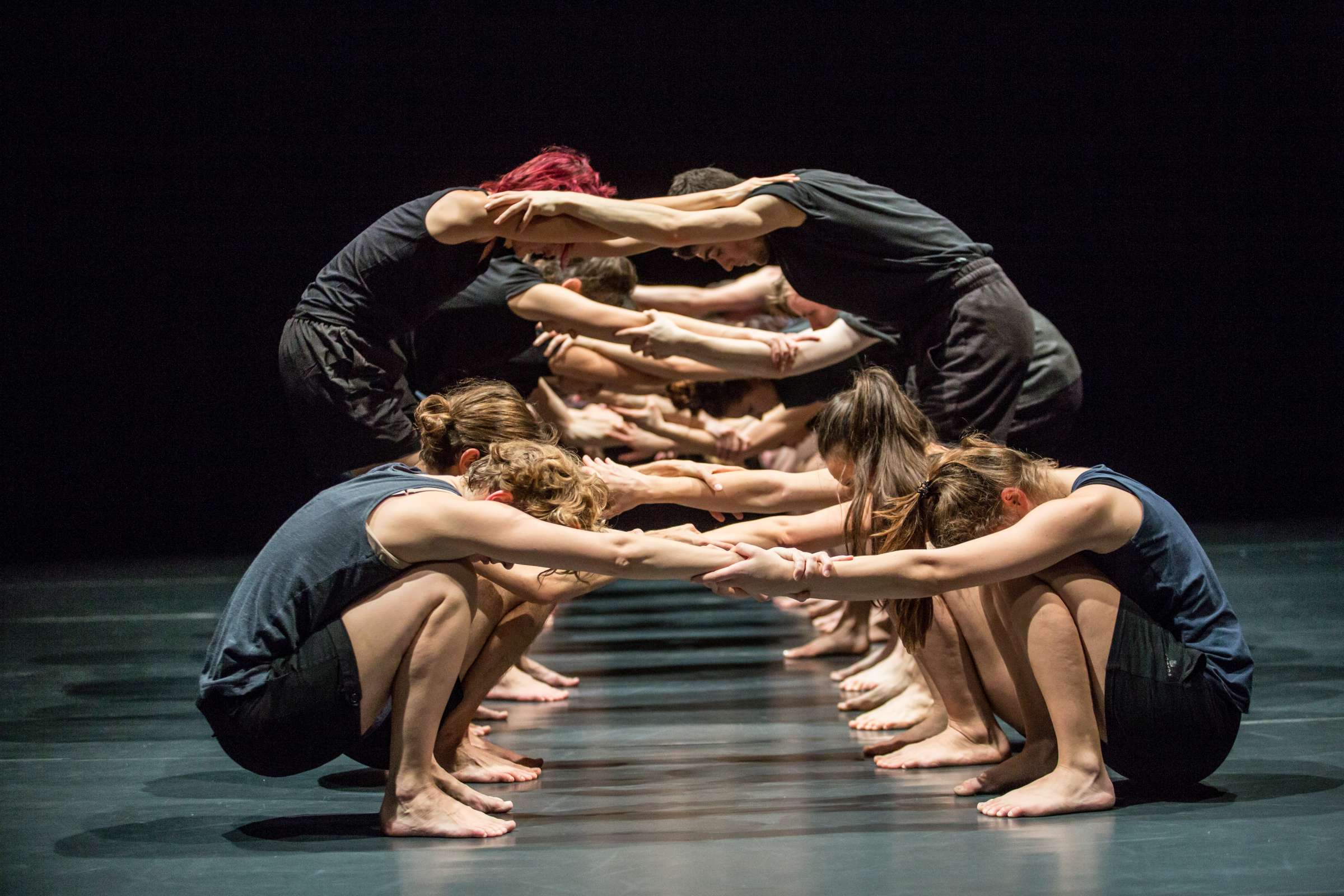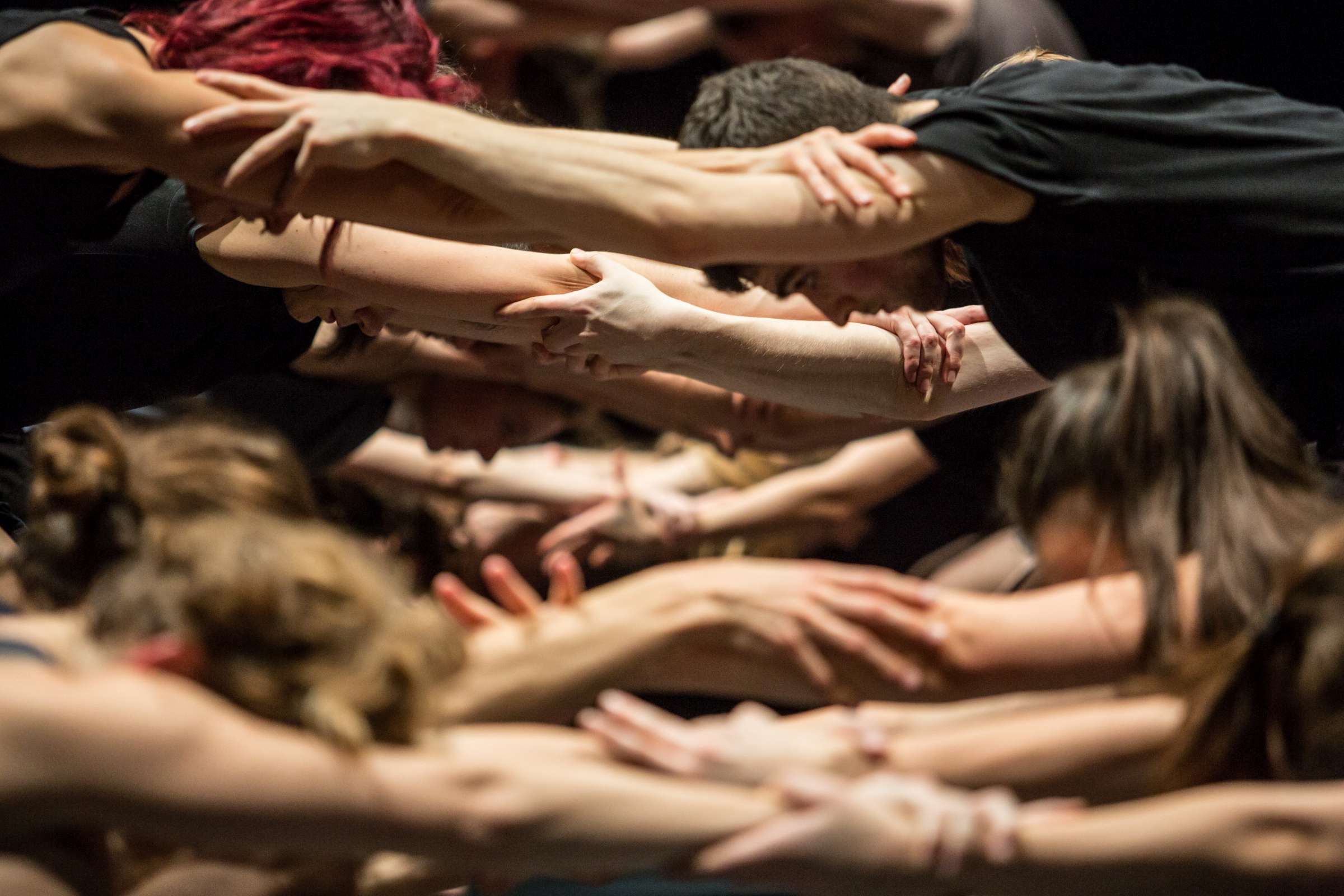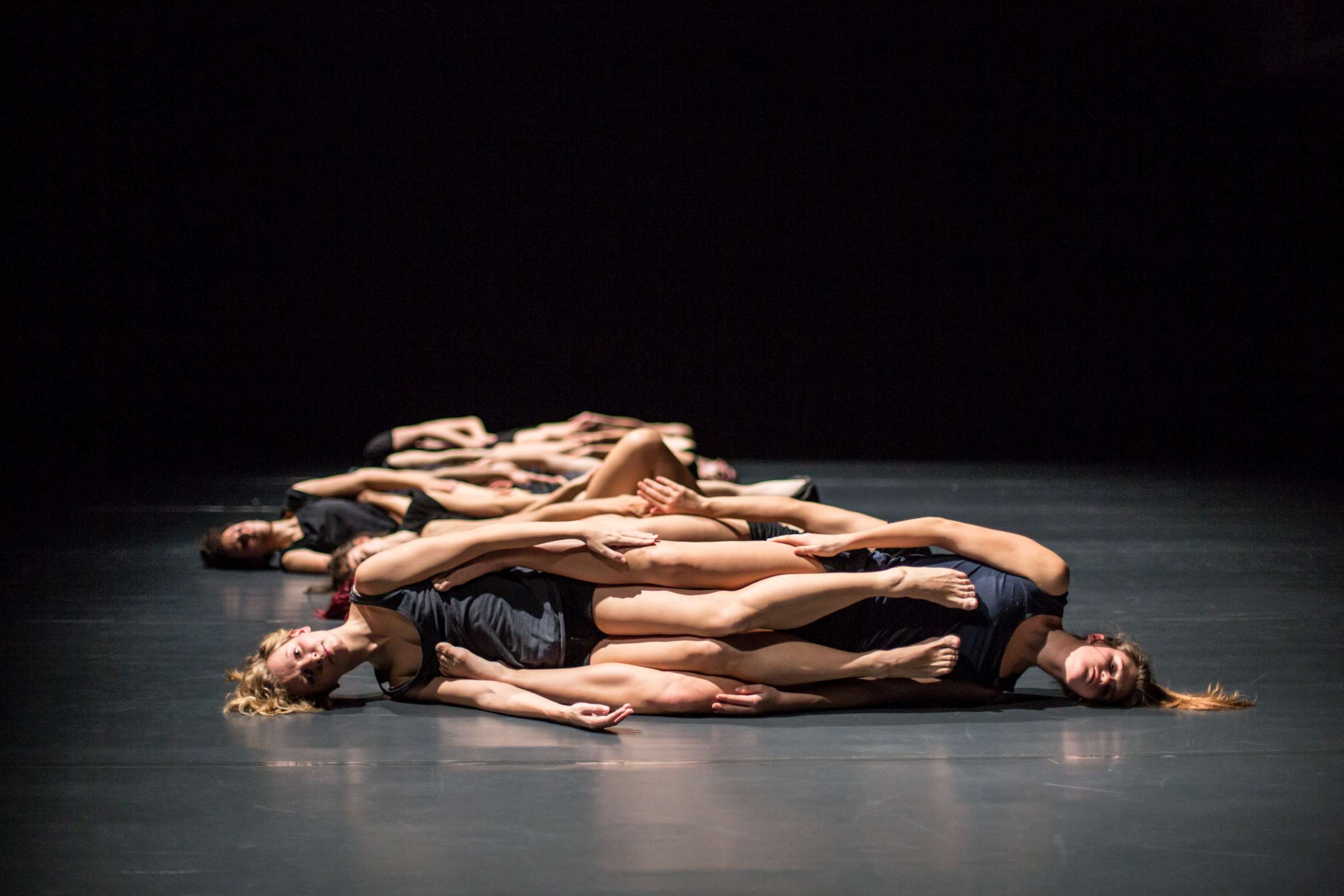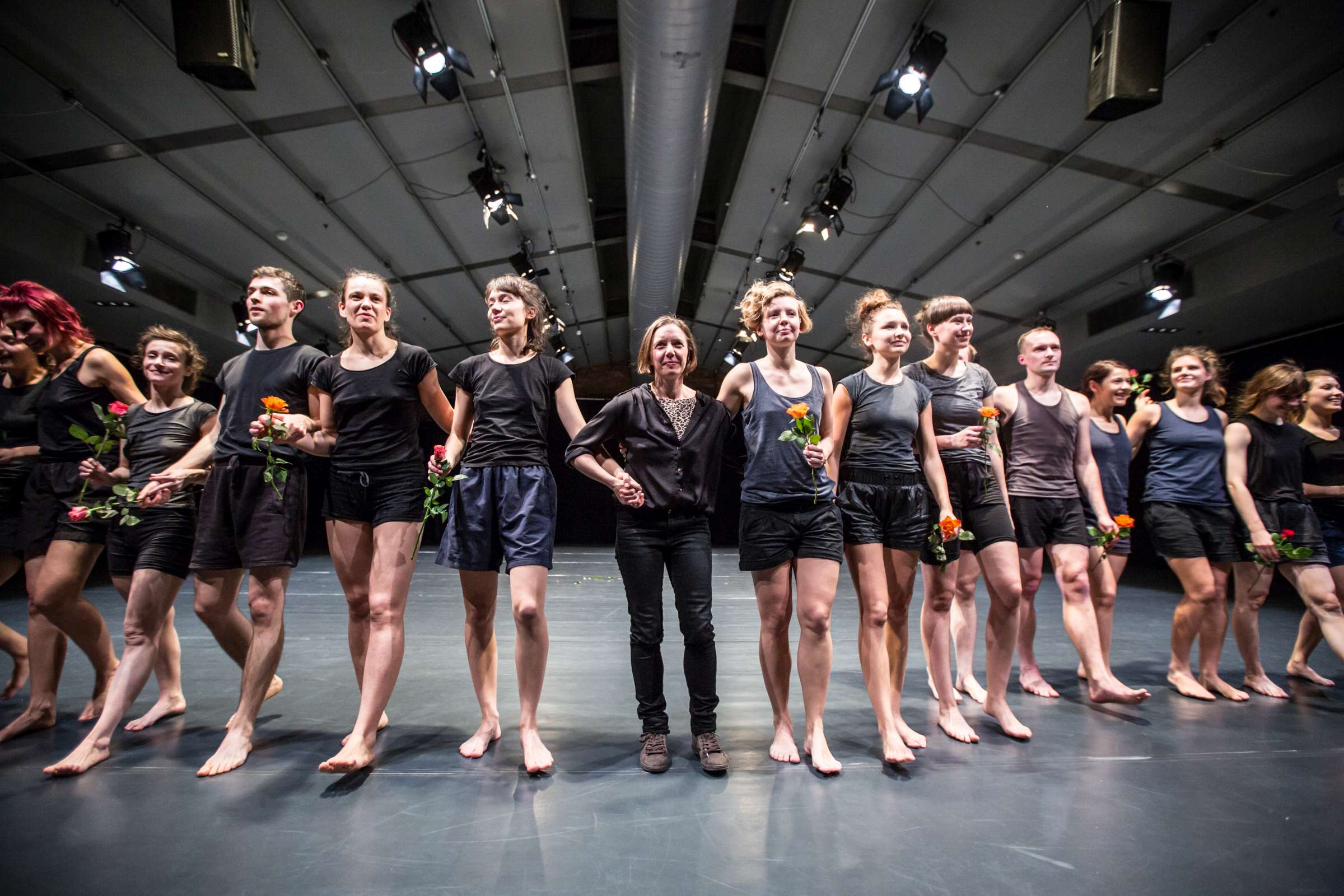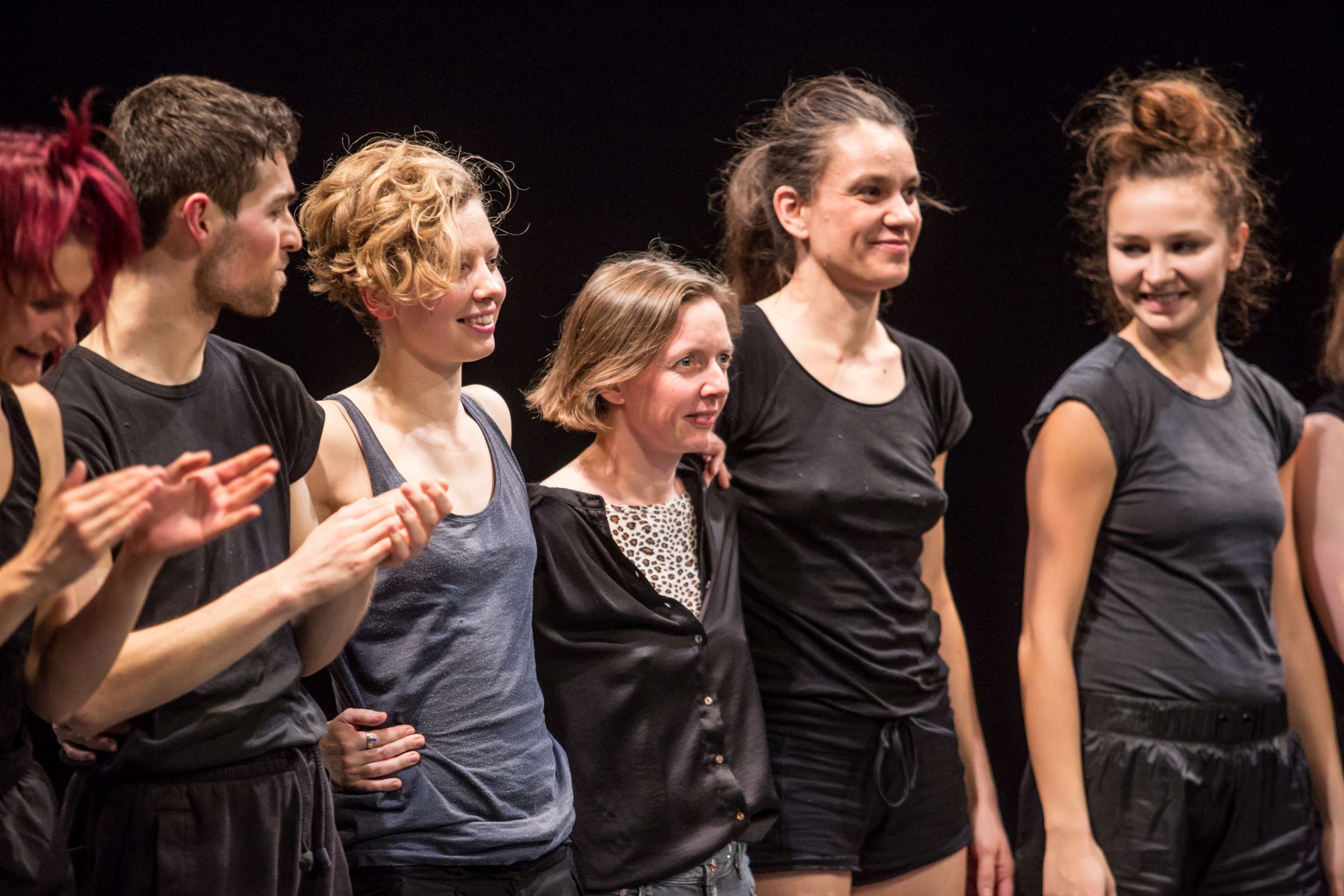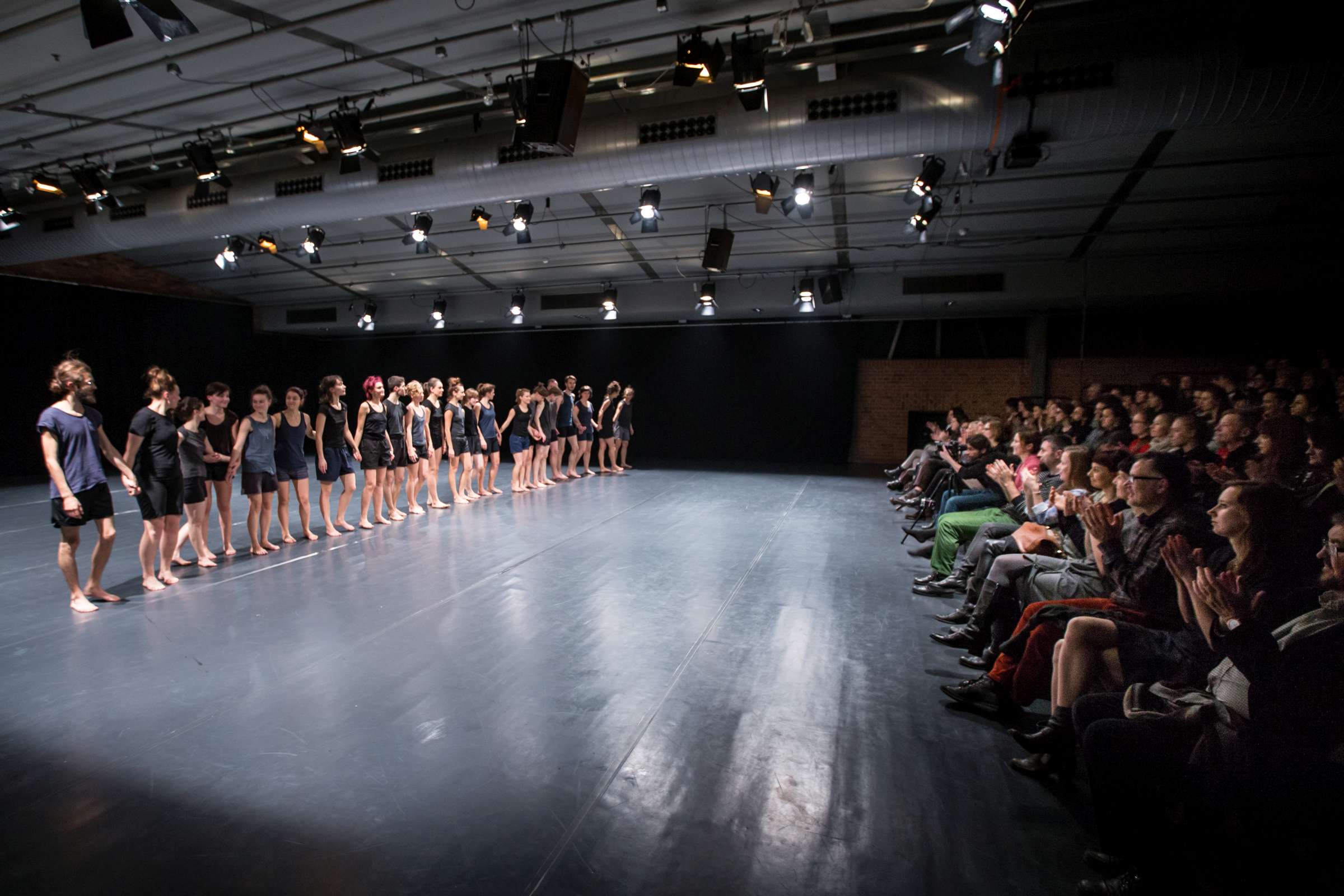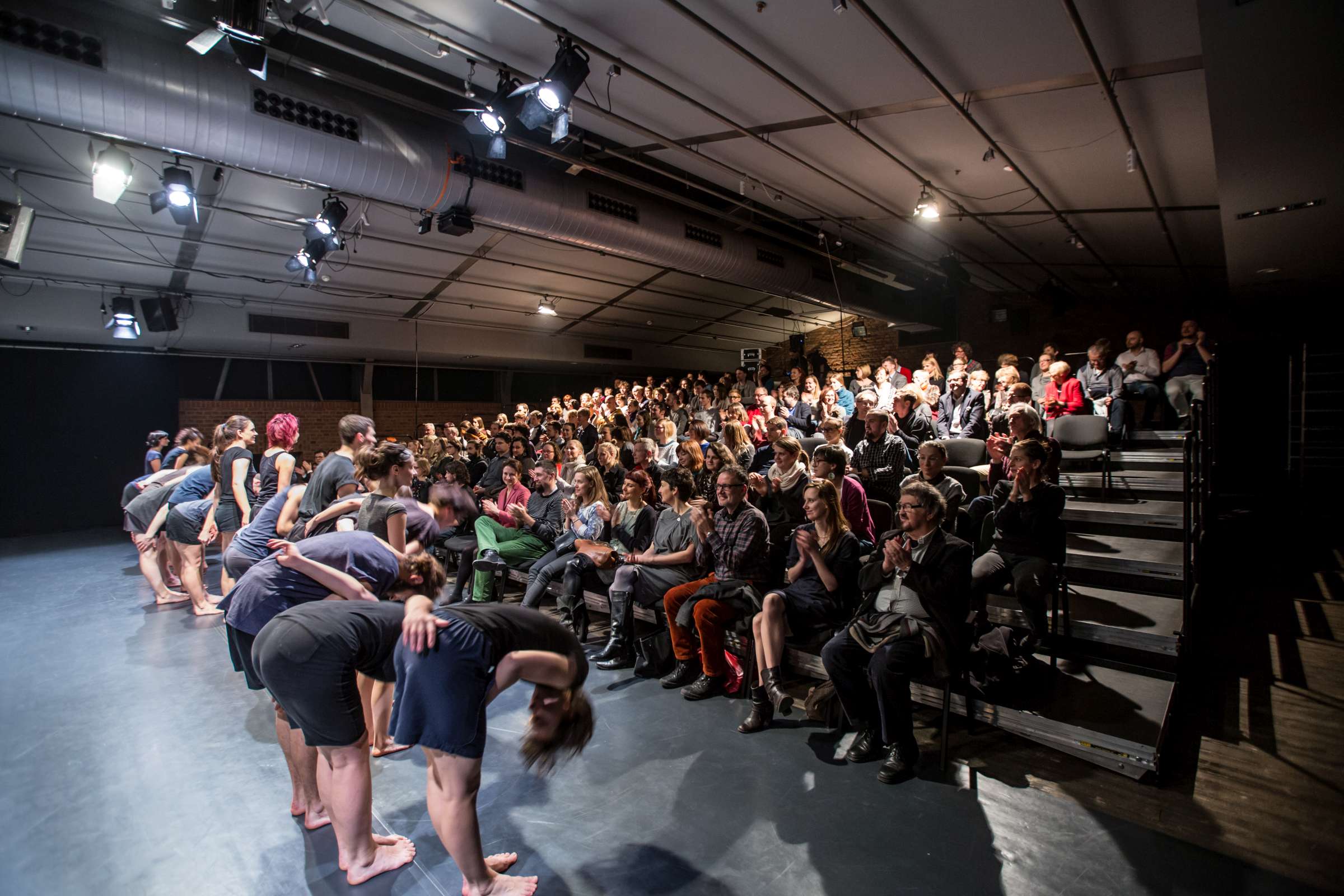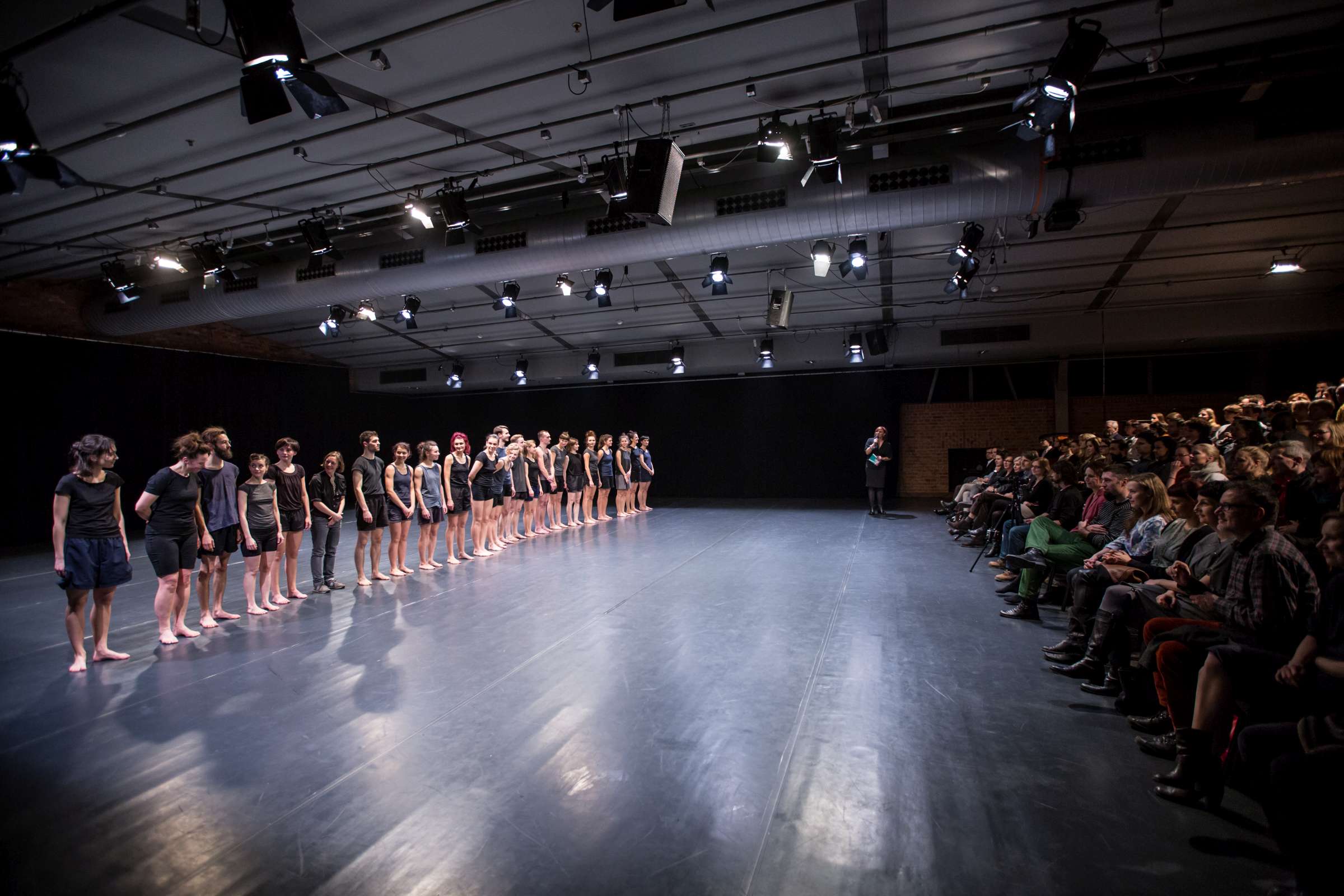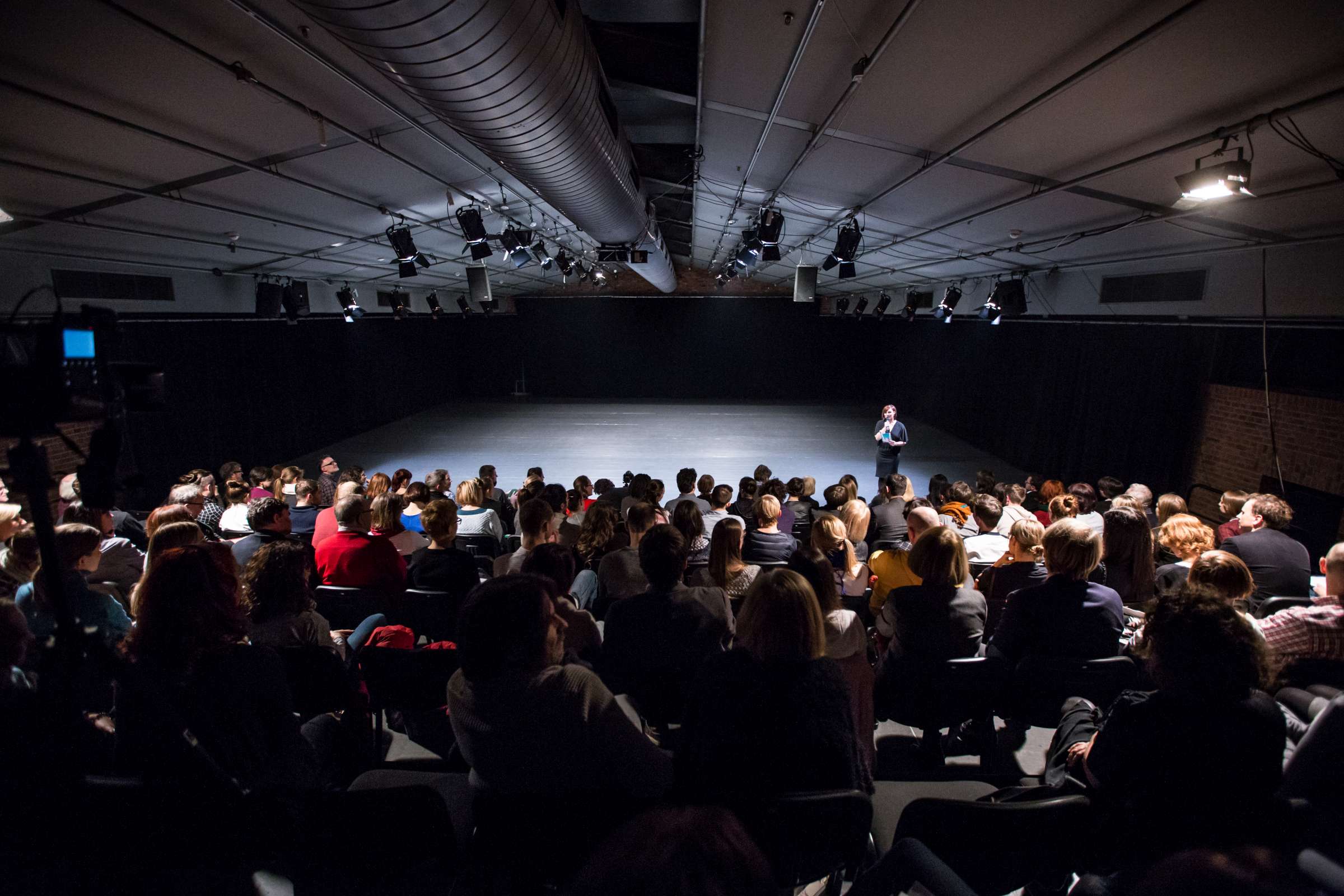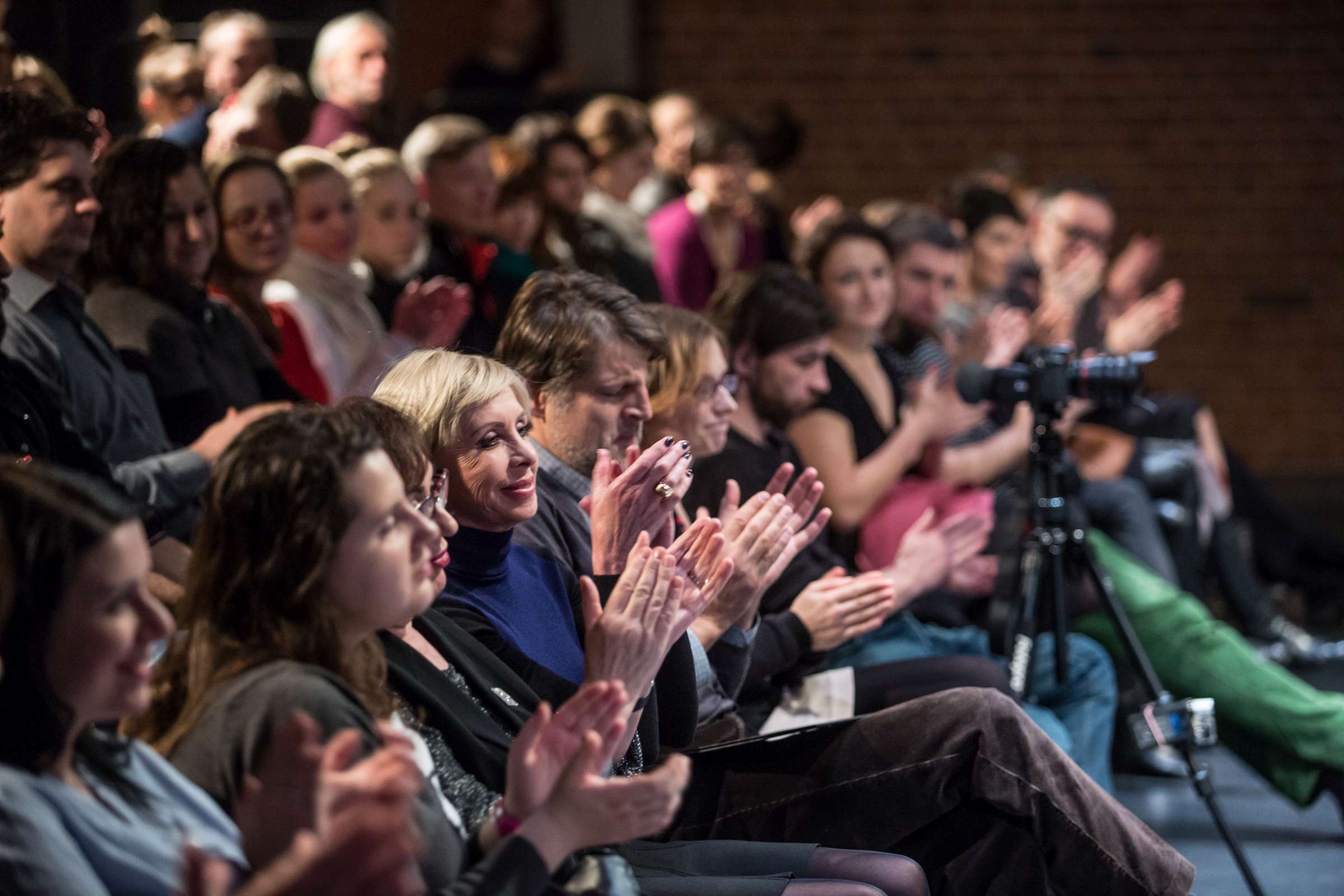’The group’s body is made out of many. We exercise practices that have the potential to unite instead of individualize. We understand these practices as a relationship to oneself and to one another, as a pathway. These practices are biological ones, cellular ones, energetic ones.
We look at freedom in relation to form: to form that is made of and found by an inner process and its rhythms. Rhythm creates the form. Therefore, there is multitude, multiplicity, subjectivity, and variation : variation within repetition. We look at freedom as the essence of happiness. We experience happiness when the flow of movement can be done together and be maintained. We look at freedom that is guaranteed once everyone within a group can find form in a subjective way. Therefore, there is a specific relation to the term equality: Everyone can be equal, once subjectivity in one‘s own respective rhythm is guaranteed within the form.
We look for equality in movement and for the end of hierarchy between body parts. Relations between body parts are like relations between people within the group. We play and distort in any kind of way. We differentiate synchronicity from synchronization. We understand synchronicity as the moment when things fall together in time, a phenomenon of energy. We borrow floor, formation, and holding patterns from other communally practiced forms, such as folk dance or Eastern body practices. We relate resistance to questions of rhythm. We relate protest to questions of organization and exercise. We look at the esthetics of representation and the kind we are trying to resist. We look at the esthetics of representation as a political practice. Could the creation of an infinite, unified, monstrous body possibly become a site of resistance? Could the body itself become a site of resistance, the body of a dancer ?’
(I.Schad, Upon reading Hannah Arendt : On Revolution)
Isabelle Schad’s new work addresses the topics of collectivity and resistance, investigating the possible relationships between freedom and form with a group of 22 dancers. Can the creation of an infinite, unified, monstrous body possibly become a site of resistance?
In a fascinating roundel, Berlin choreographer Isabelle Schad and visual artist Laurent Goldring celebrate the community-building power of dance together with 22 international dancers. Striding and swinging, circling, intertwining, swaying, separating and coming together again: the repertory of movements and formations that the group adopted from folk dances seems inexhaustible and universal. Liberated from familiar dance rituals, the movement material reveals how profoundly it touches and permeates the individual body. In a hypnotic flow of perpetually overlapping images and rhythmic variations, Collective Jumps allows ever-new choreographic landscapes to emerge. Our eyes are thus opened to the political dimension of this community of dancers. The endless body formed by the dancers dismantles established hierarchies and systems and allows us to experience the subjective, the individual as a site of resistance.
